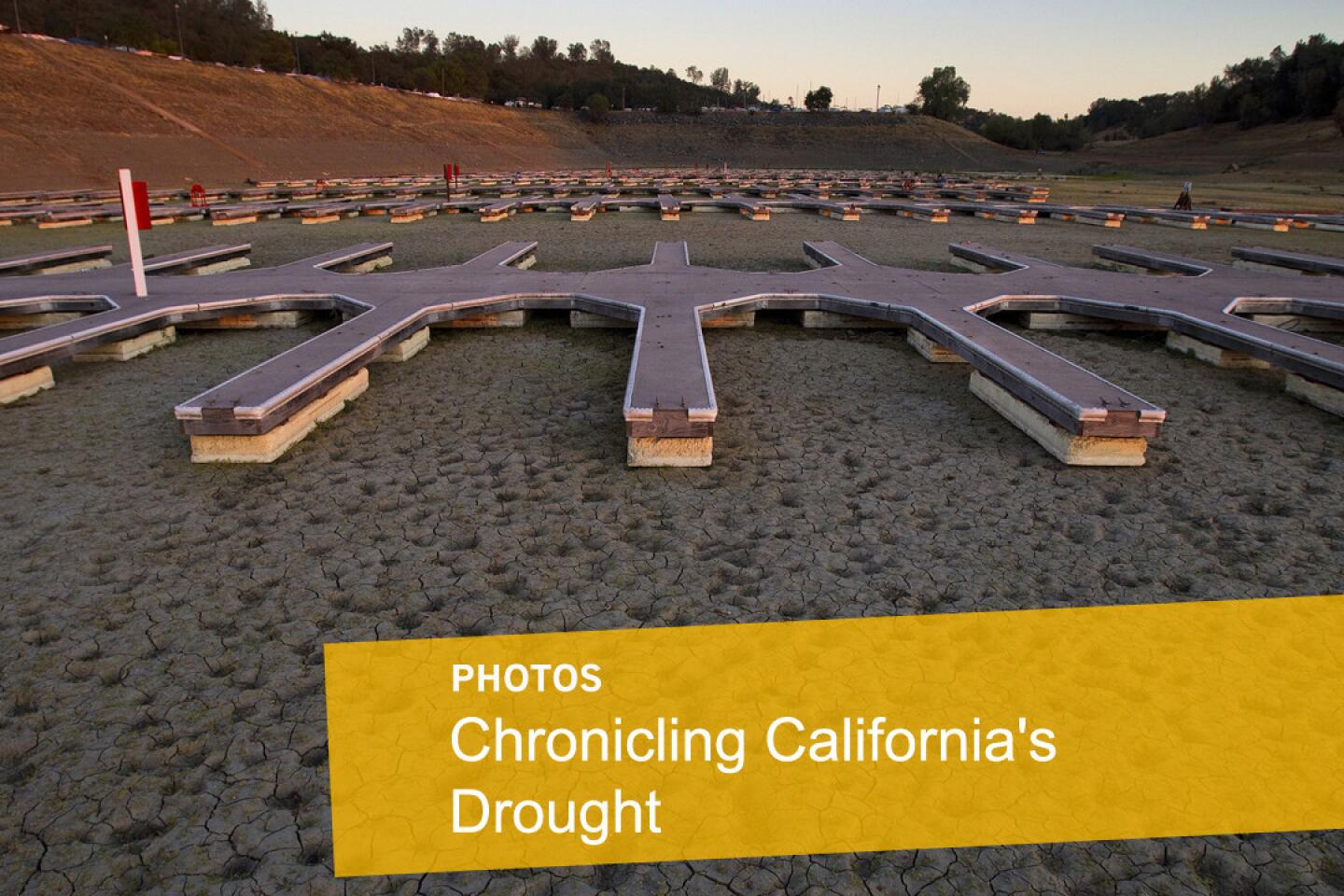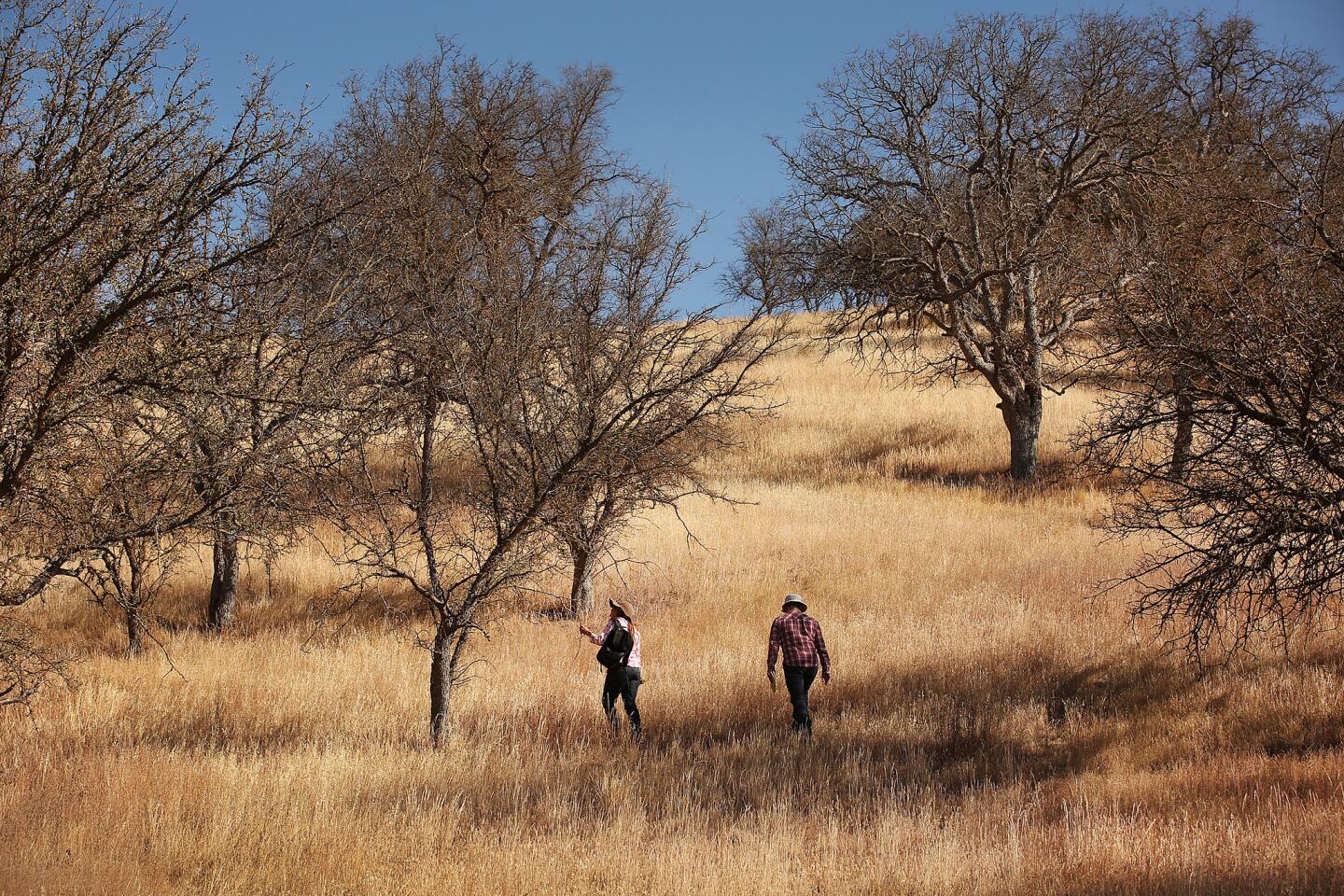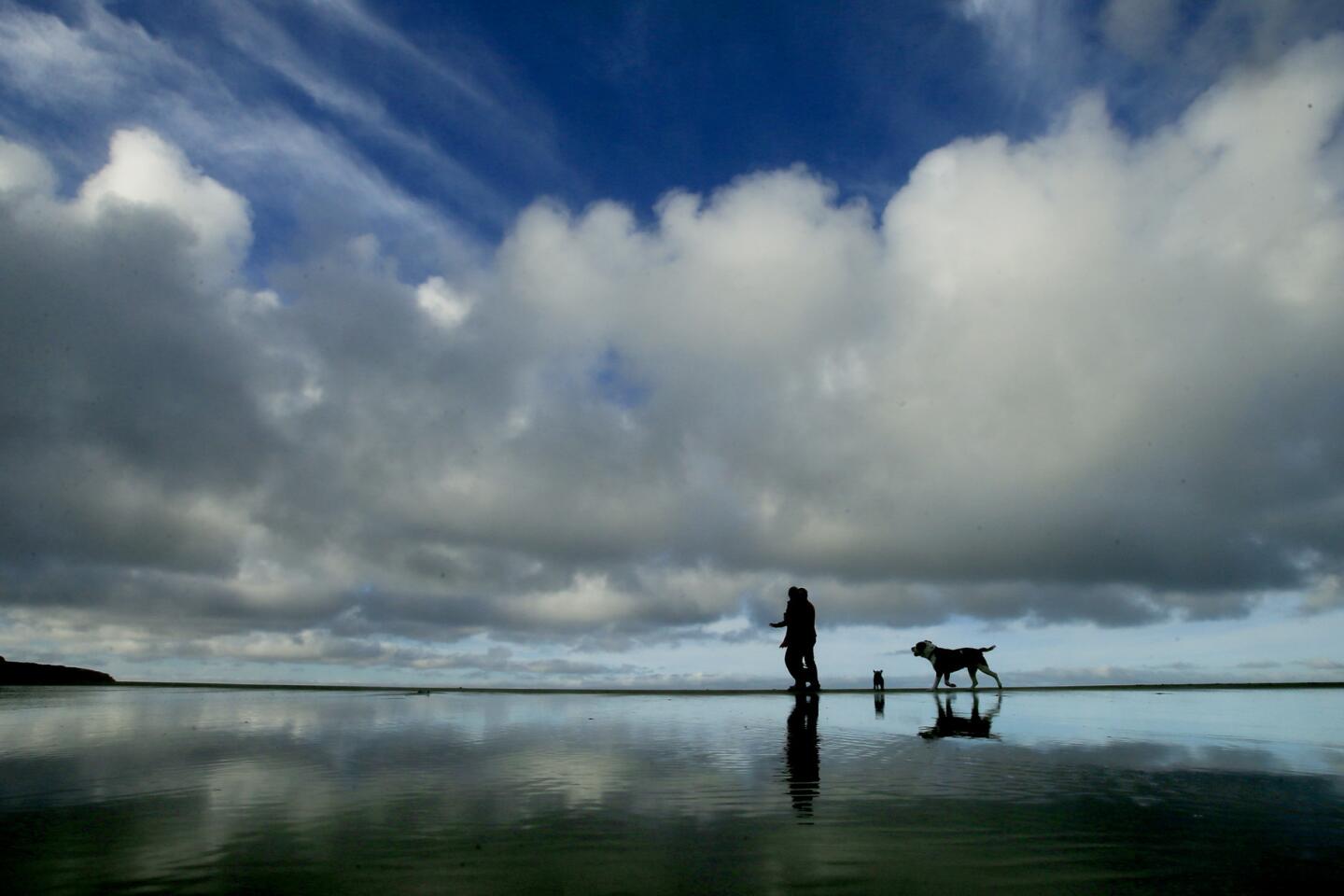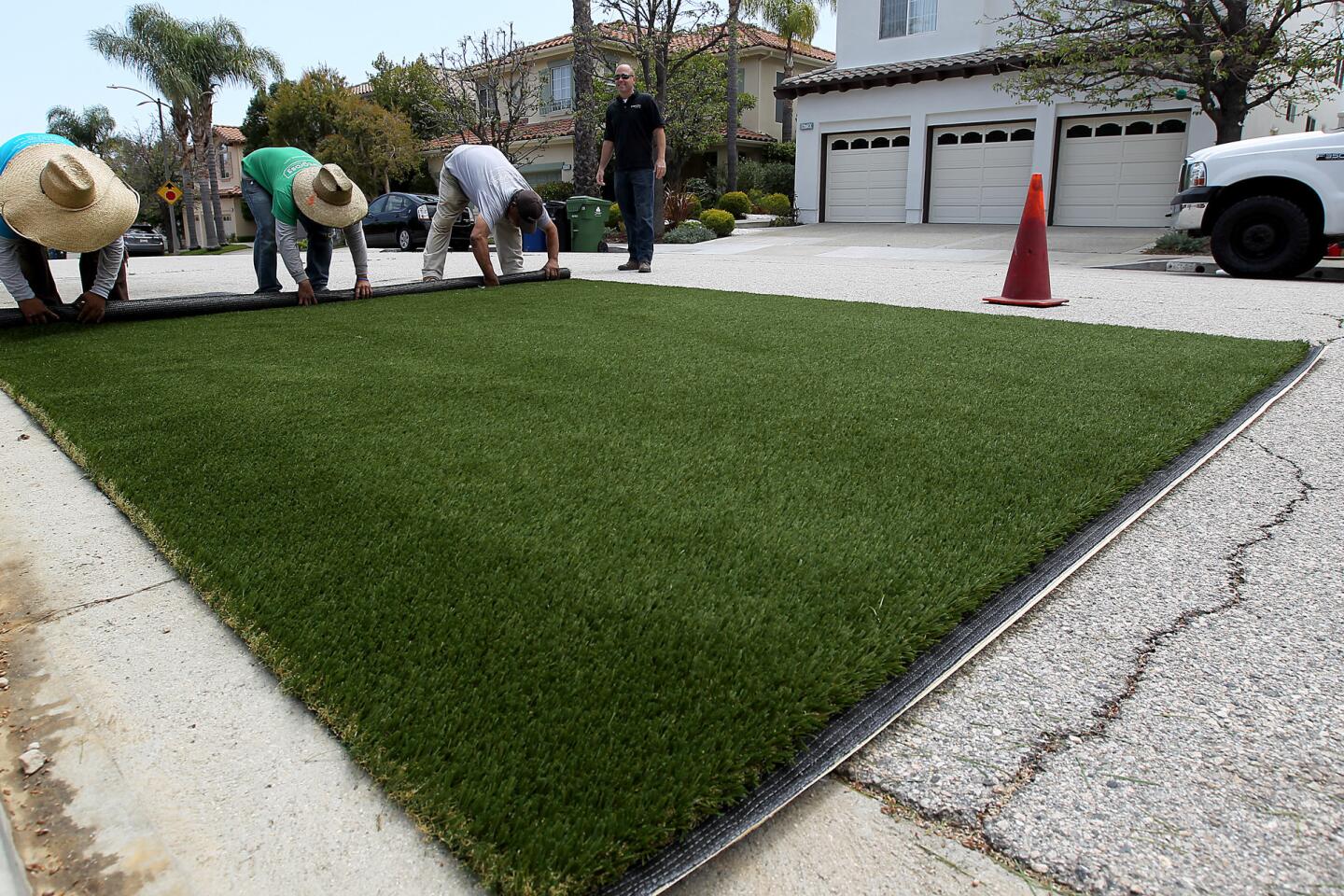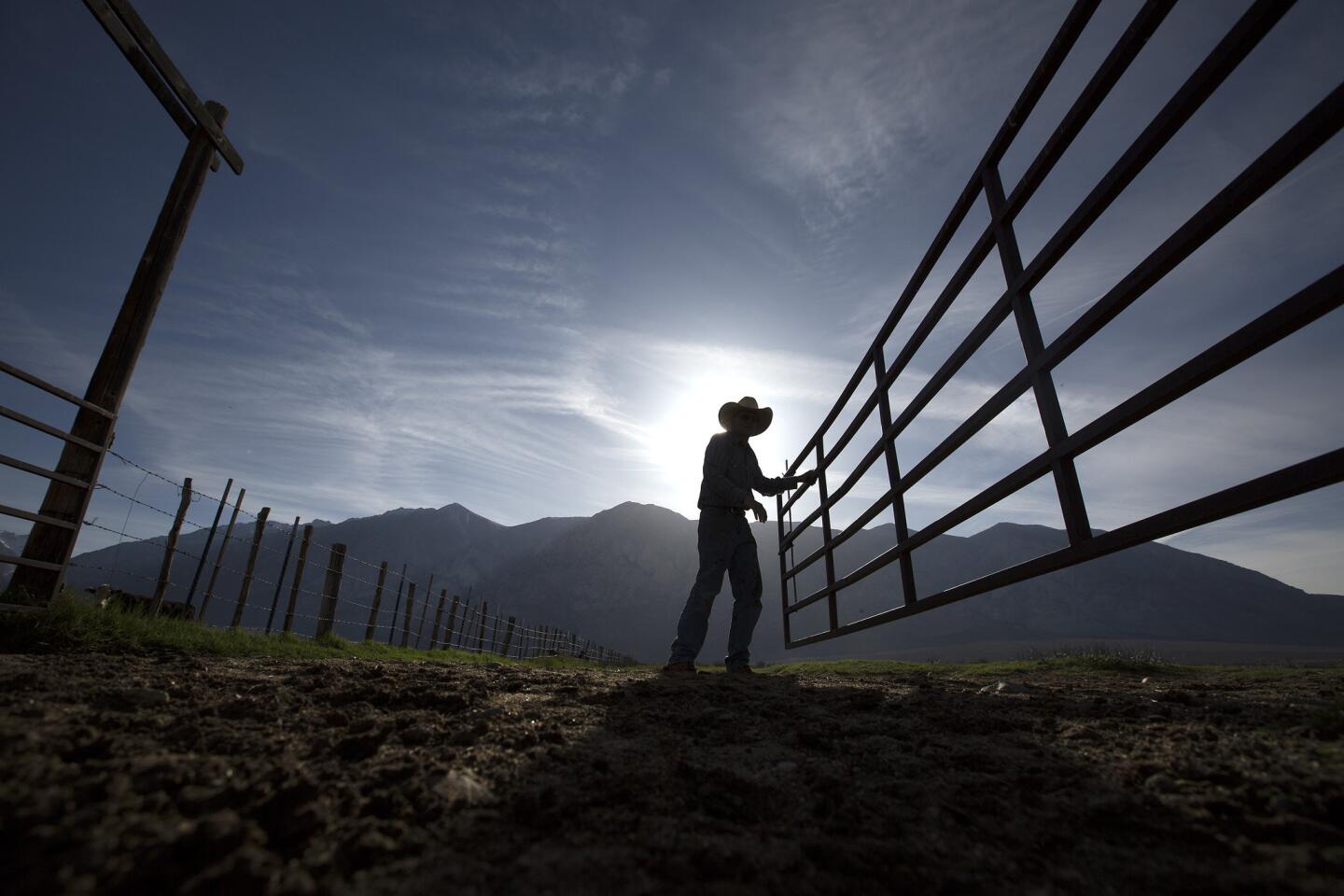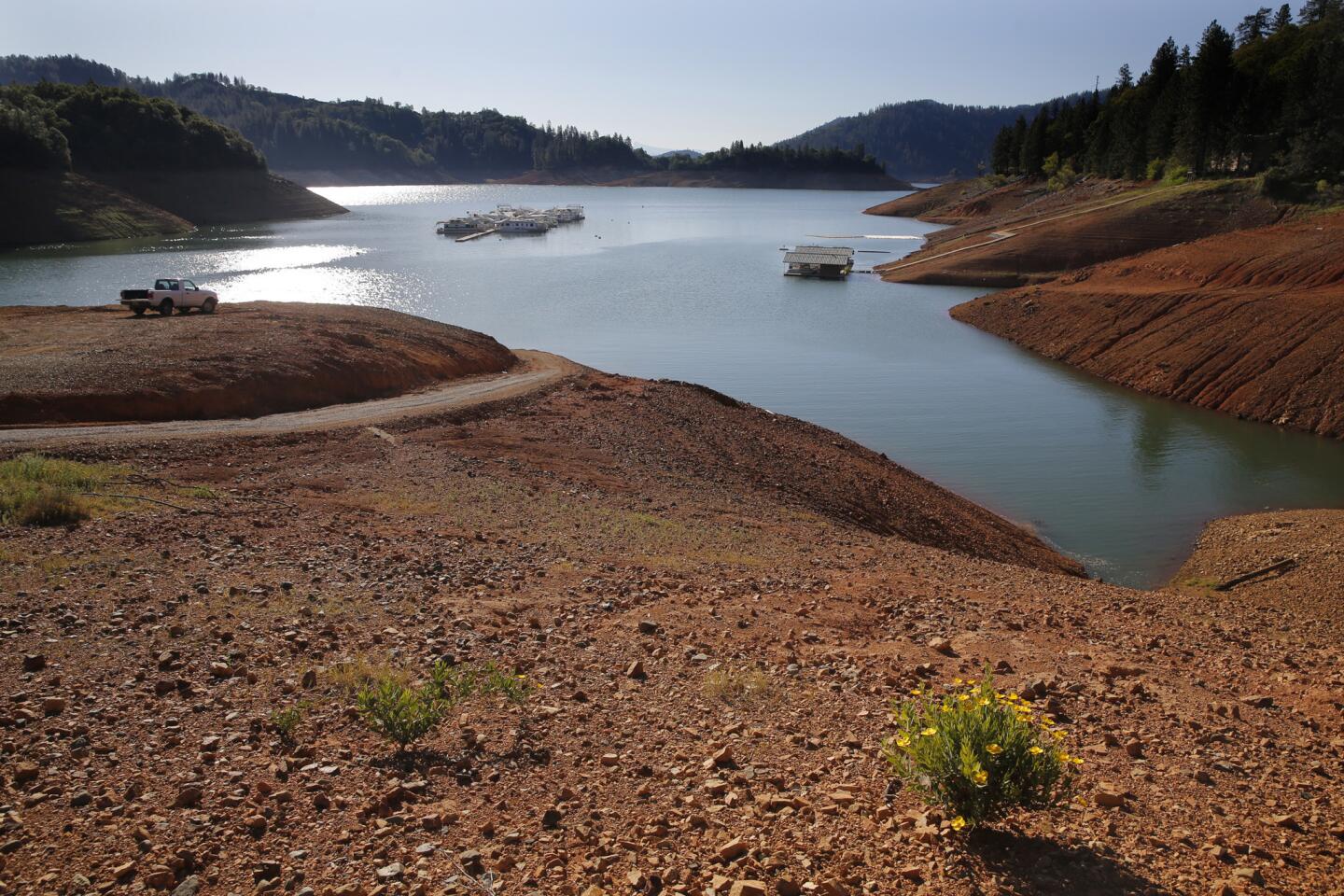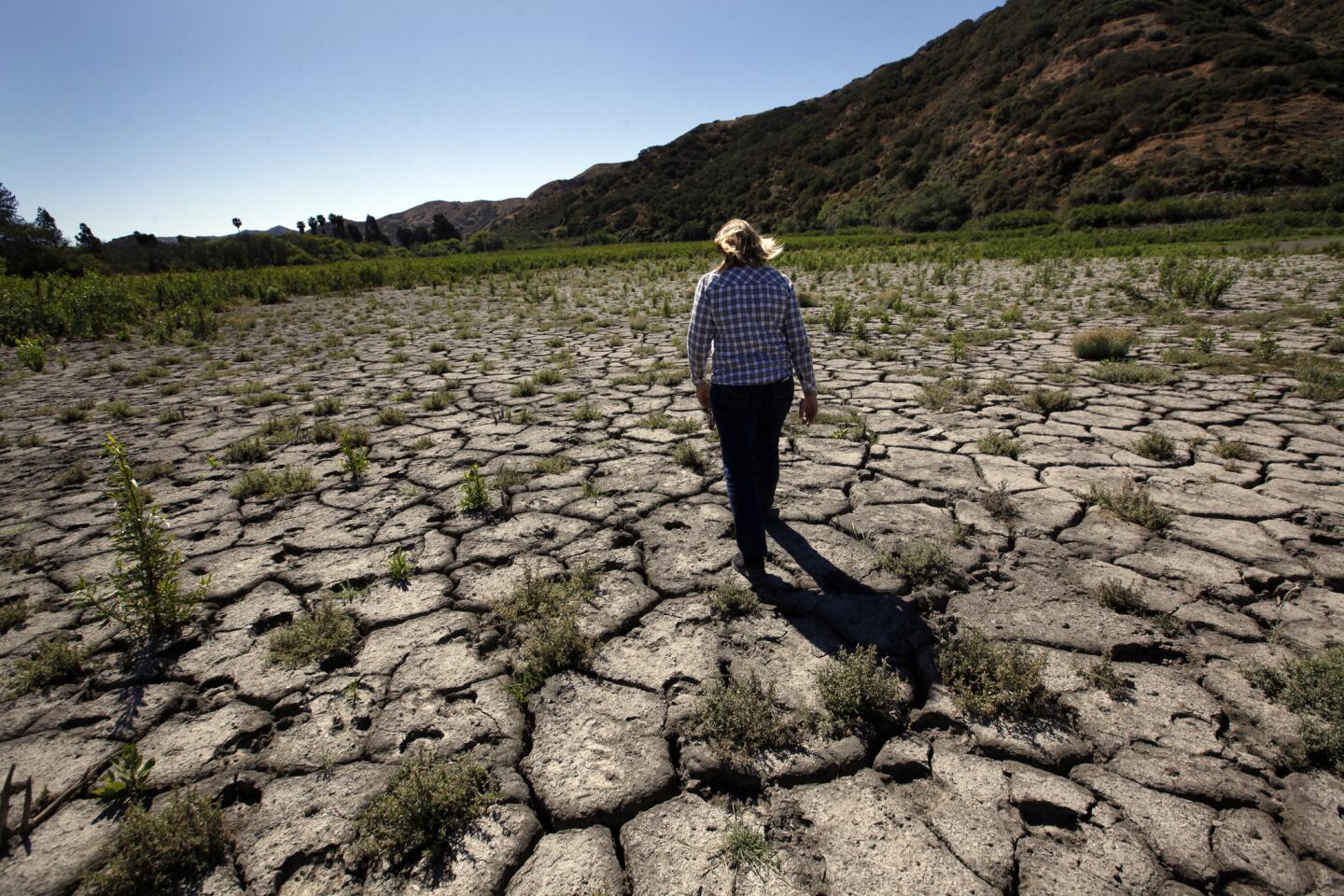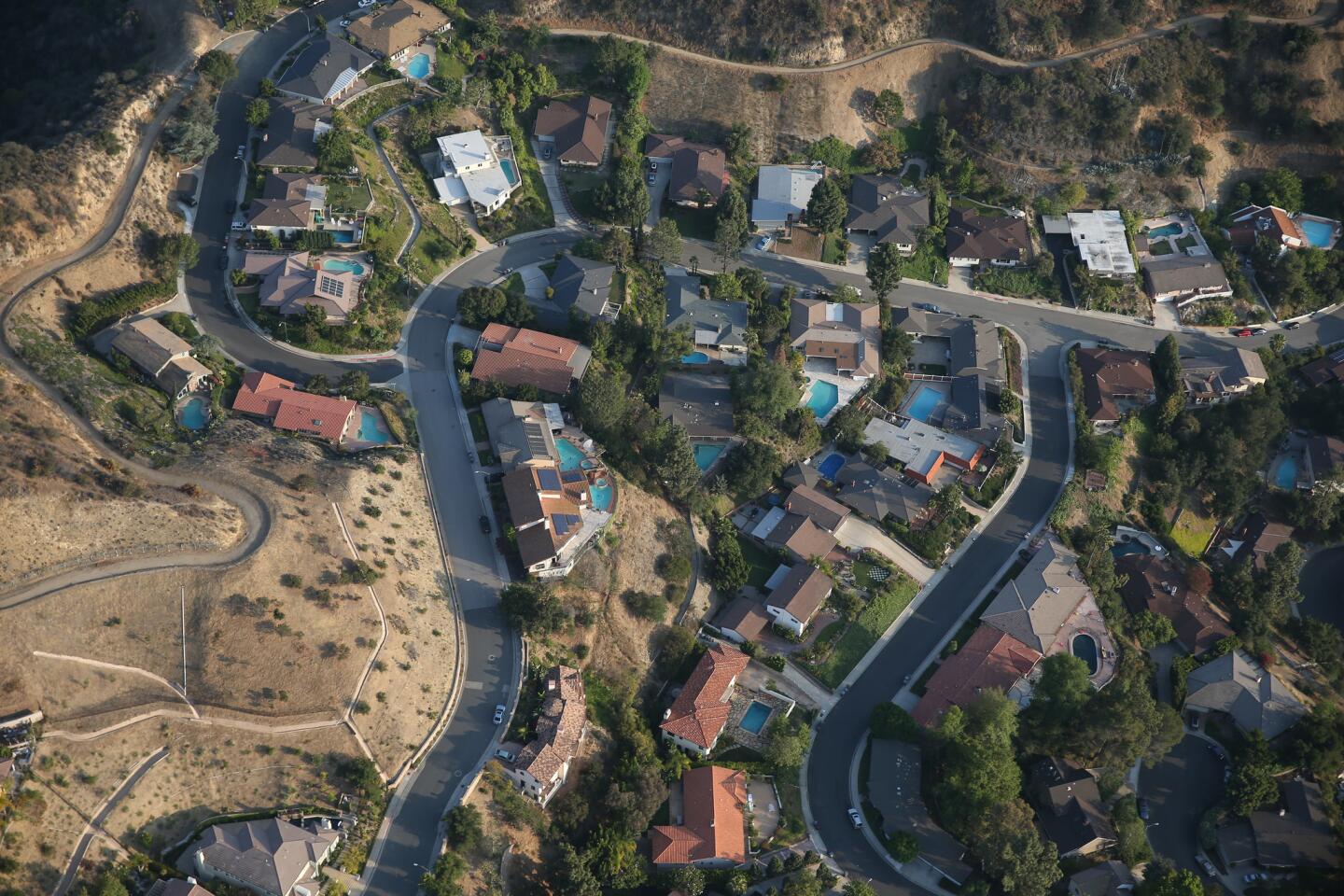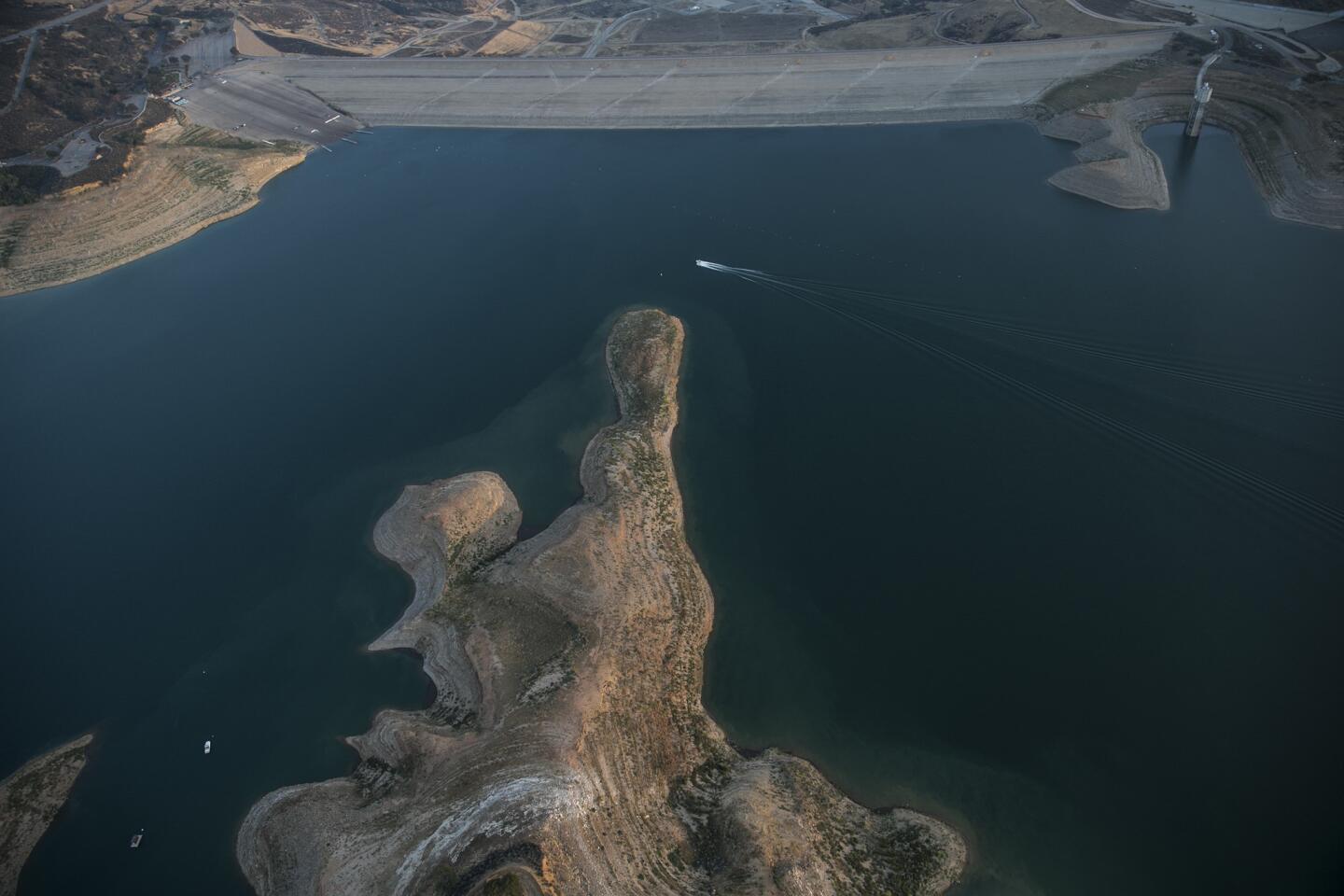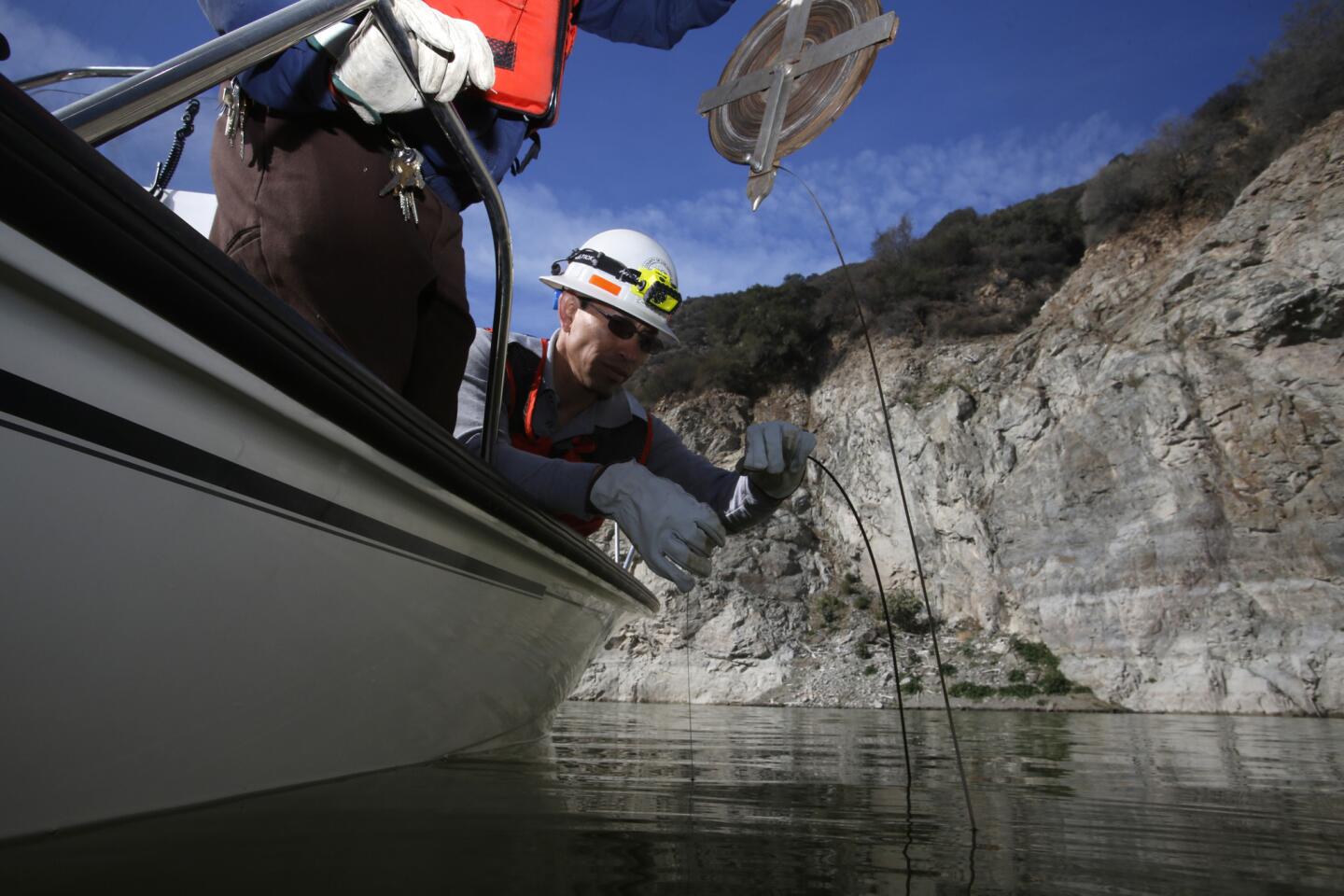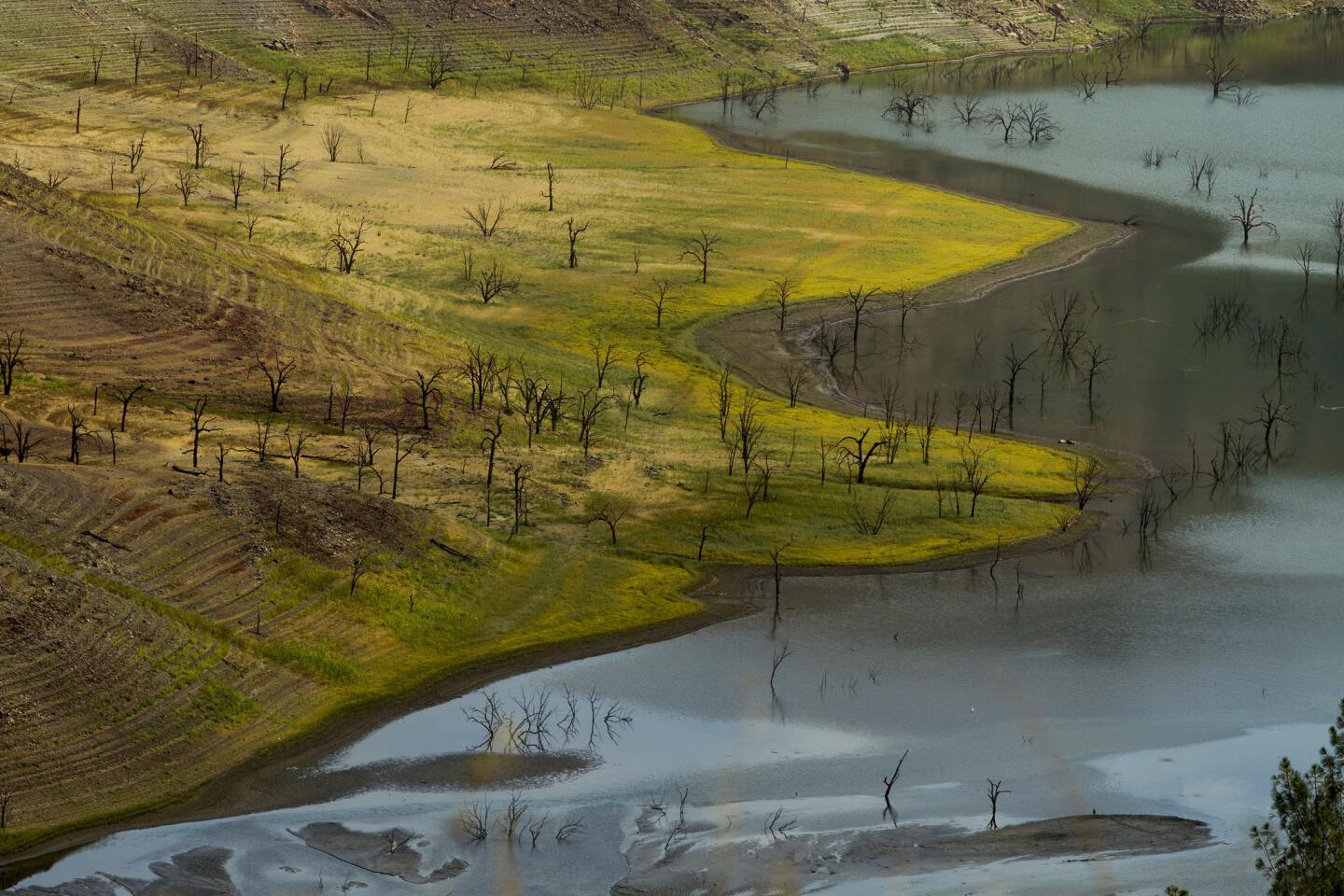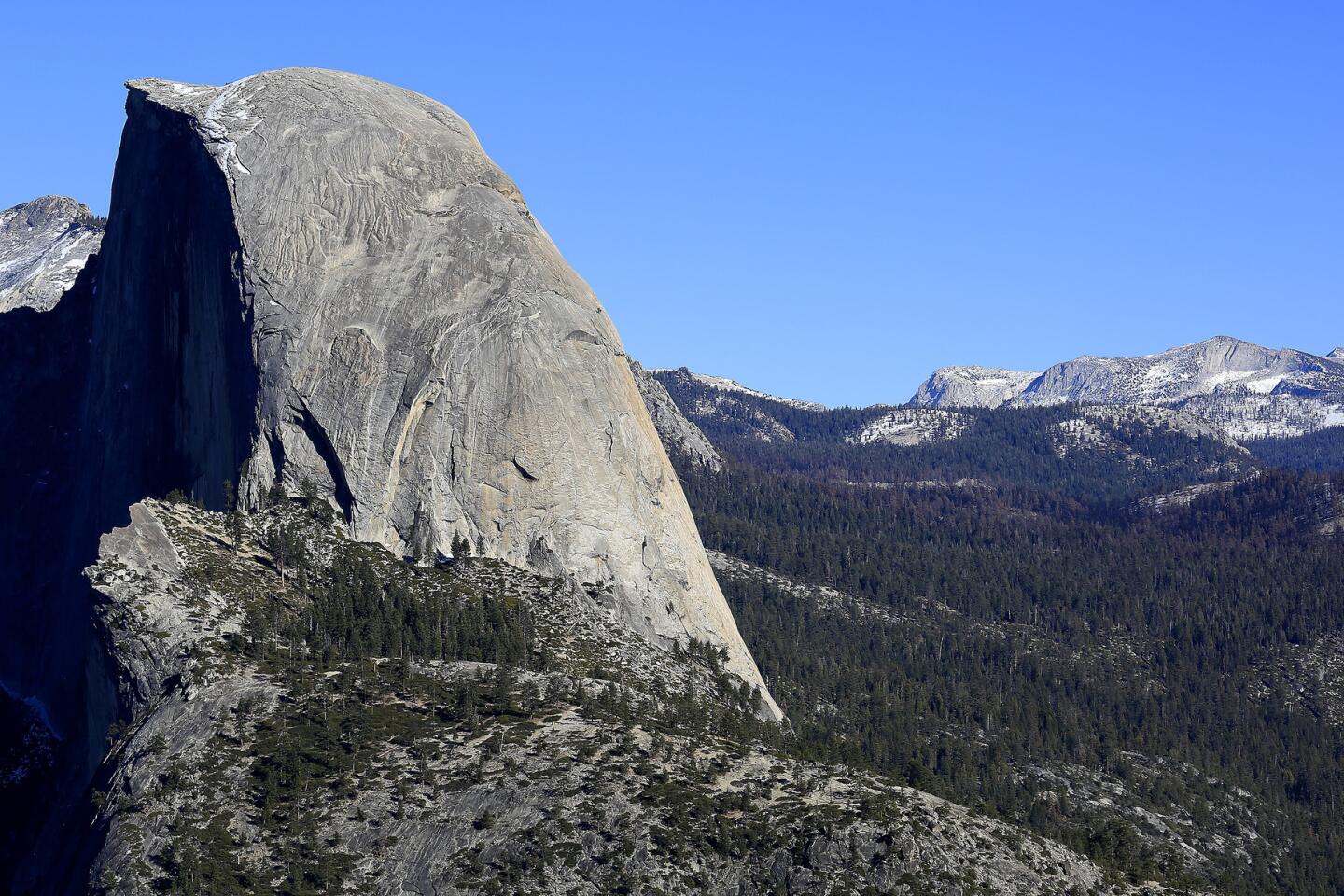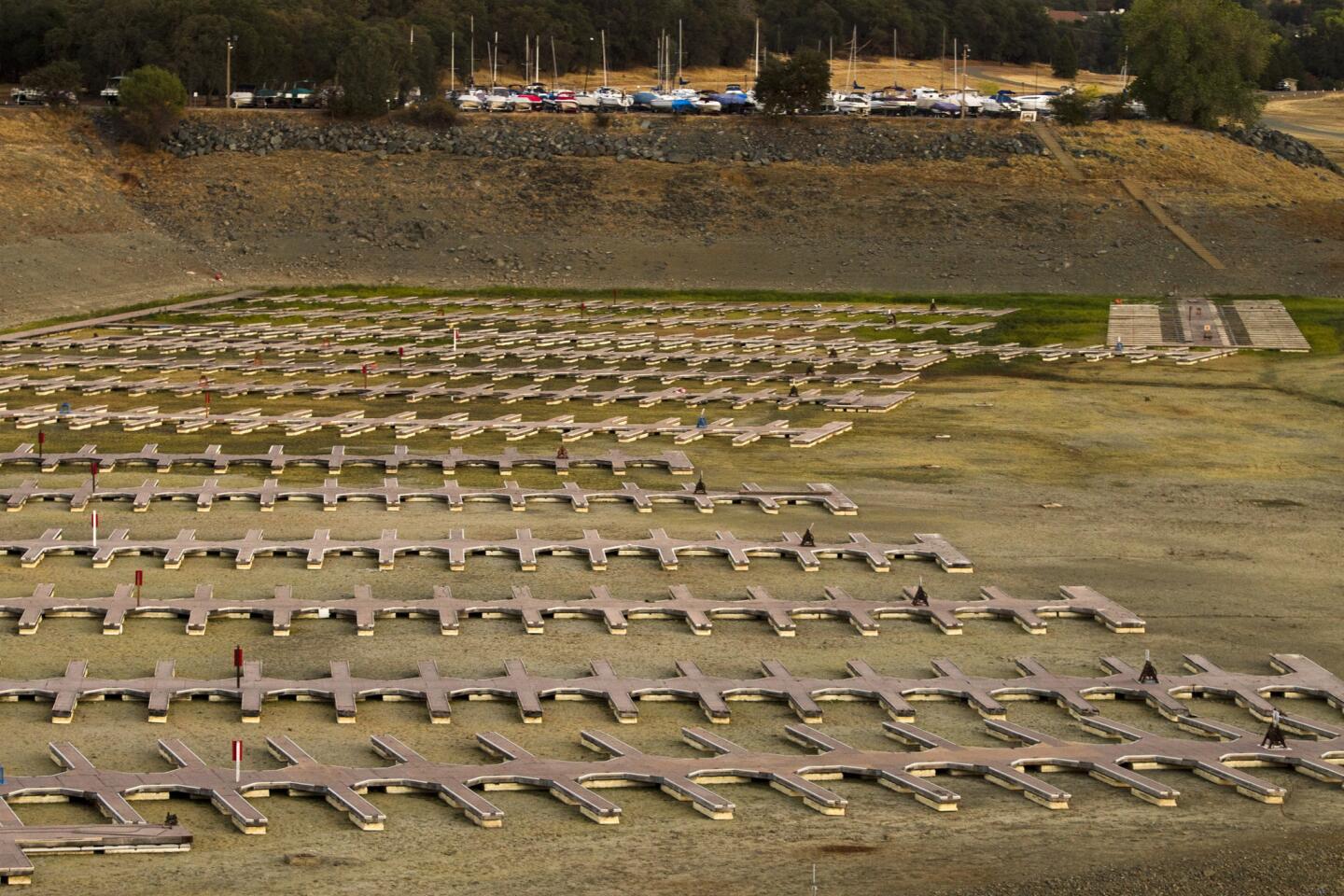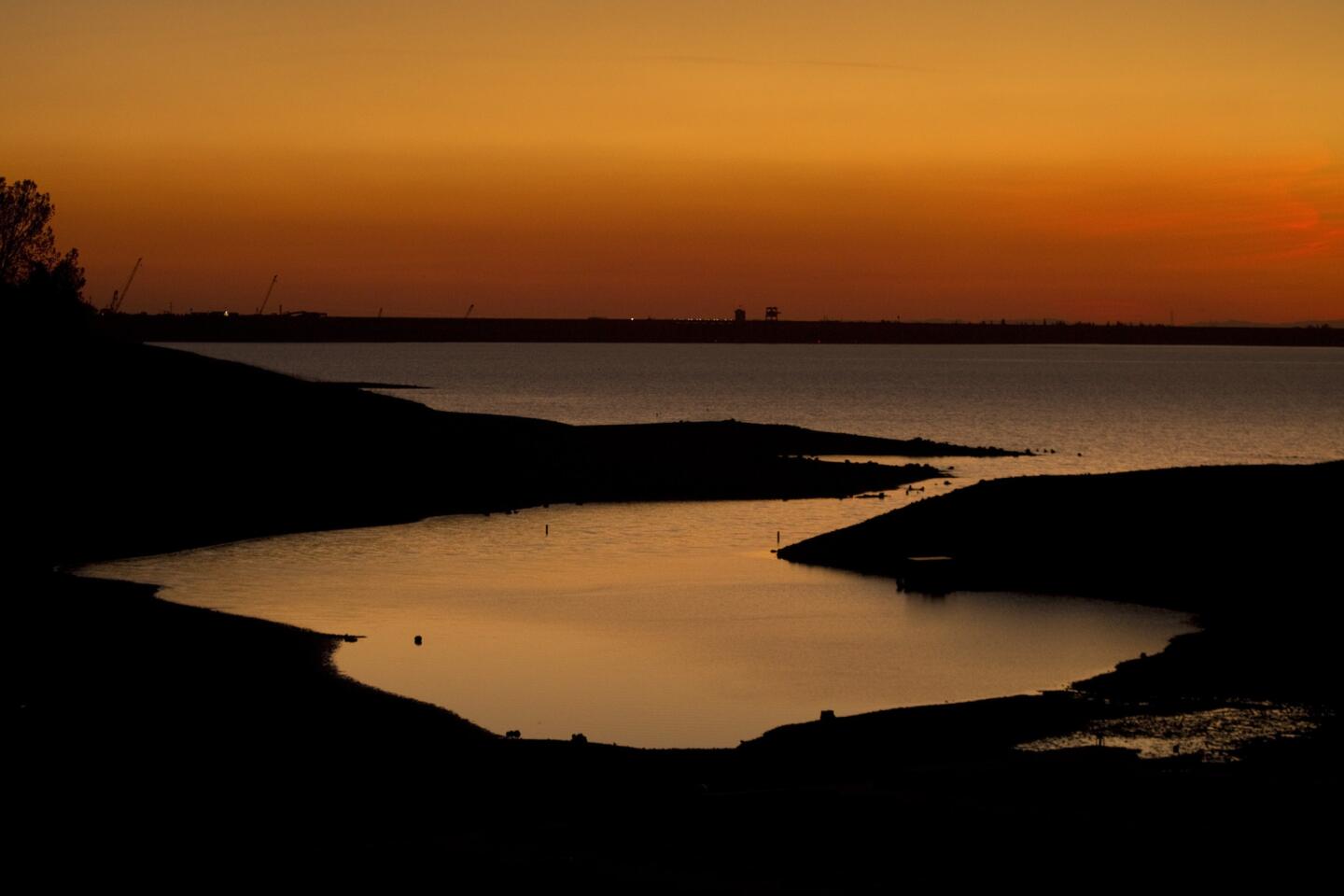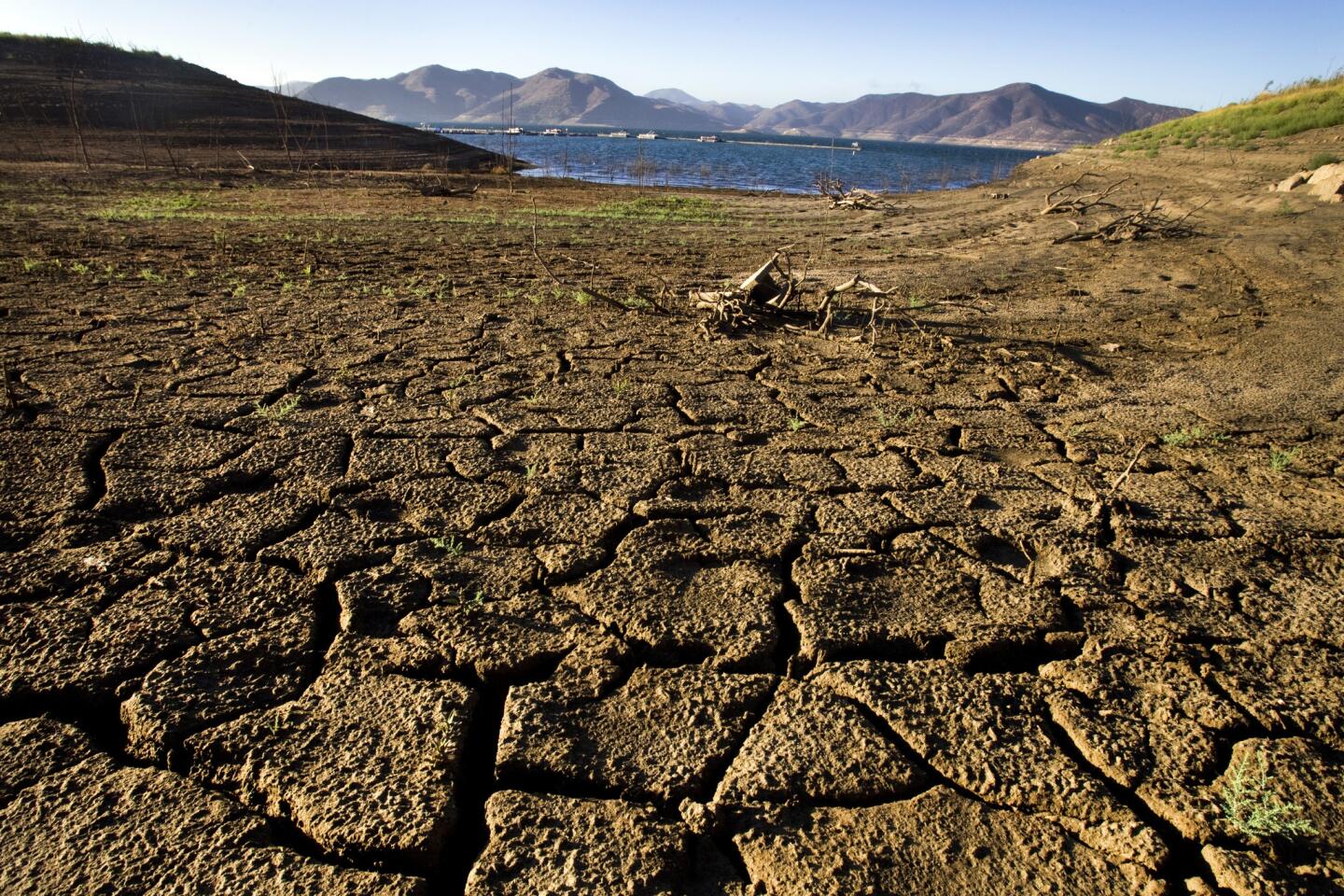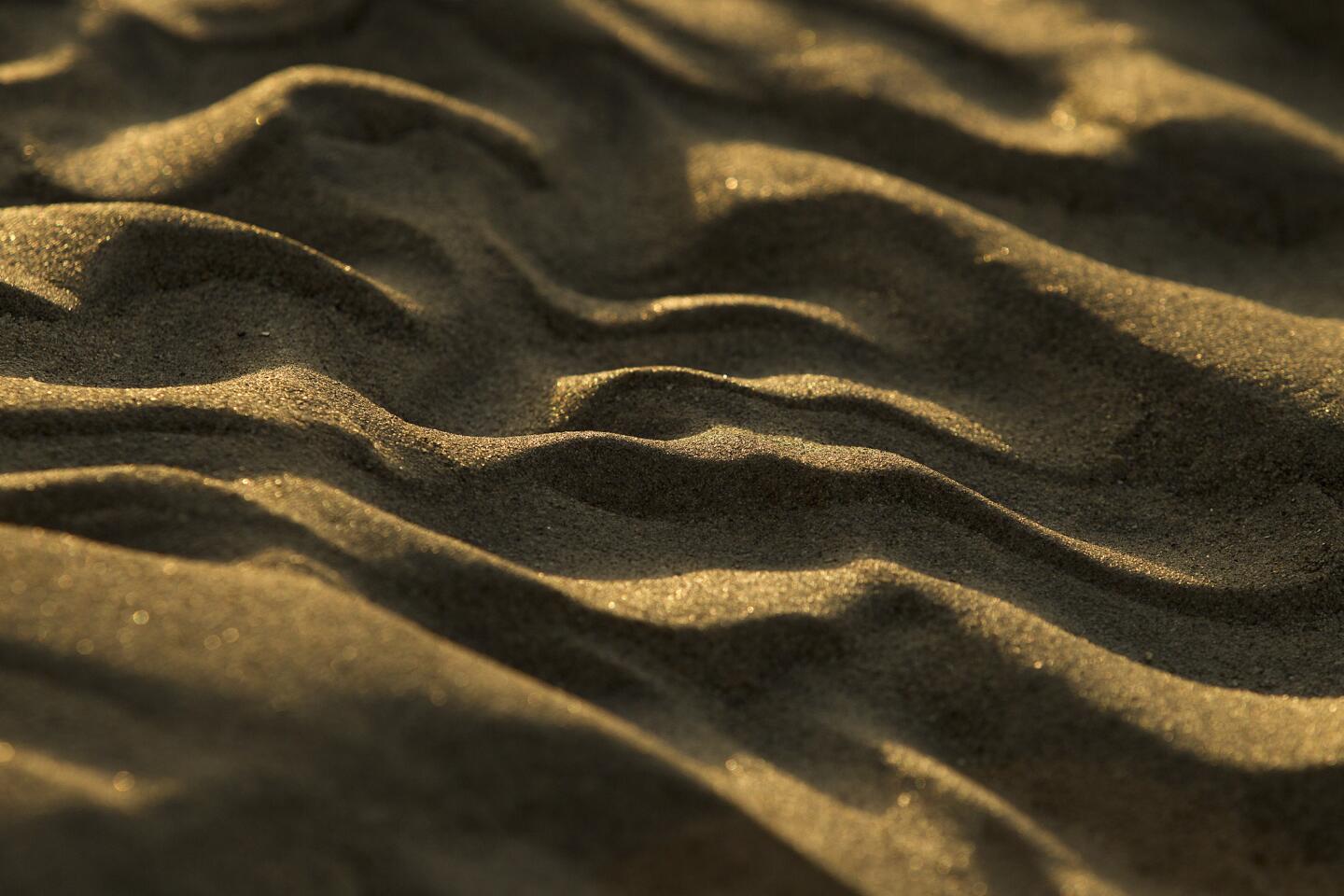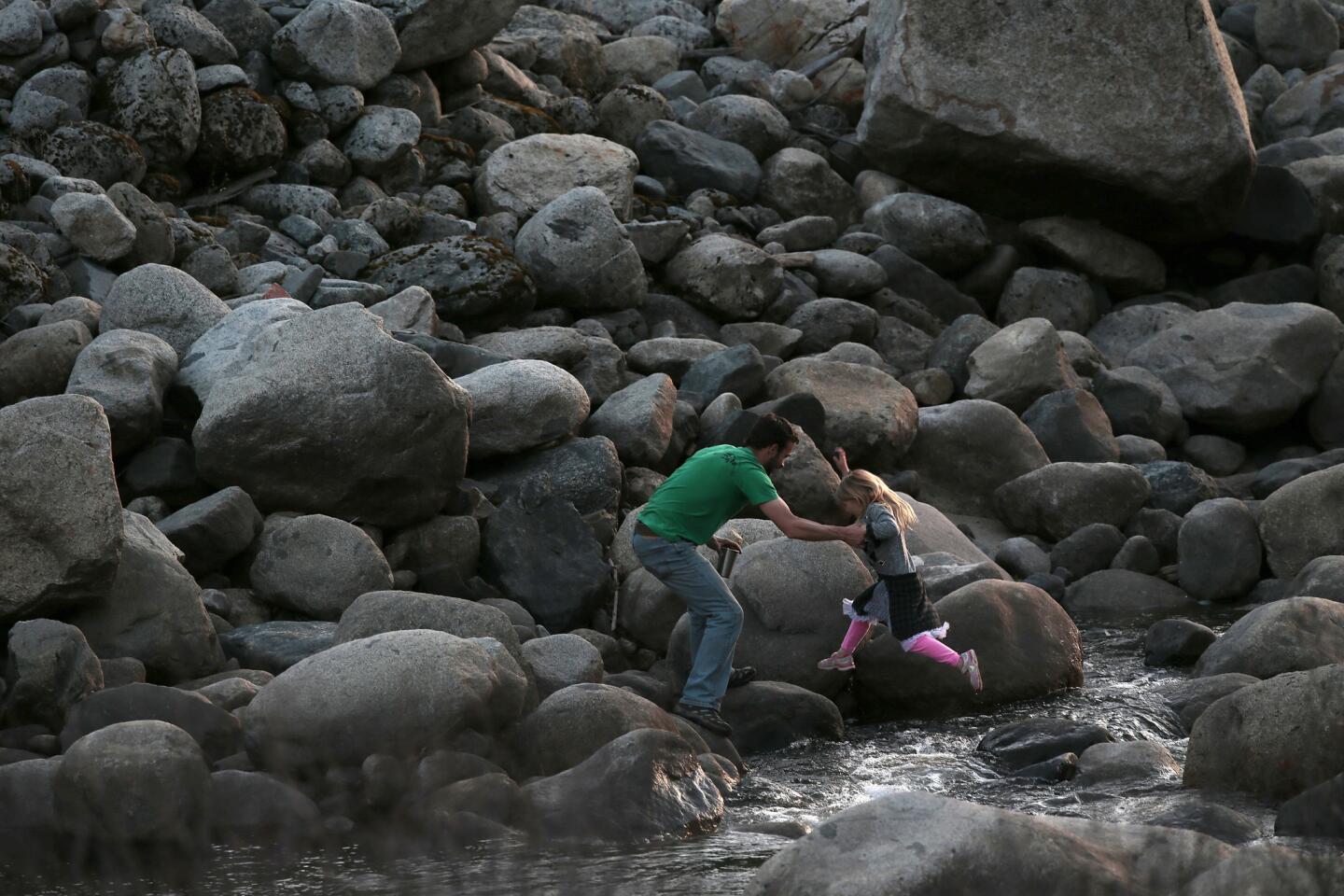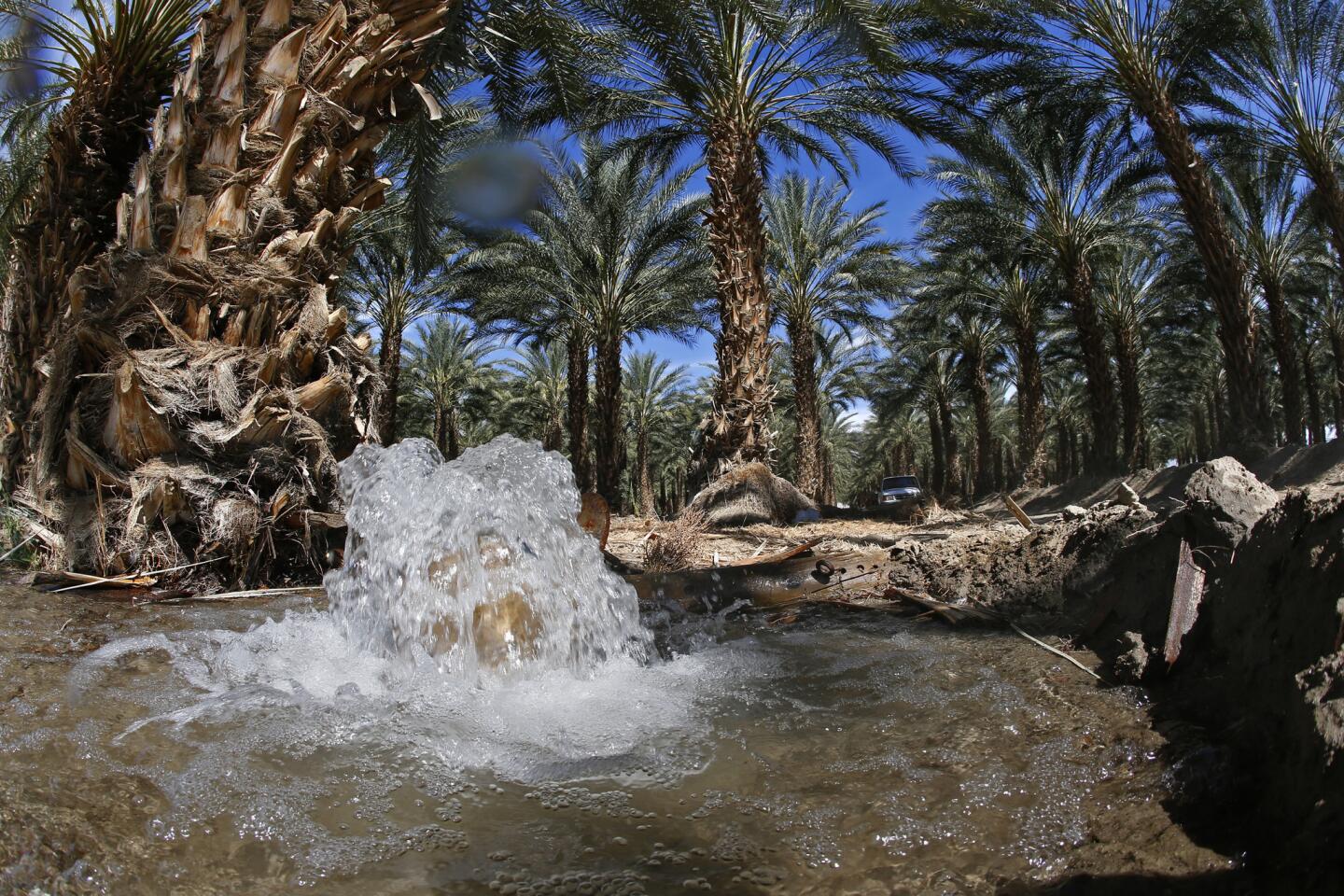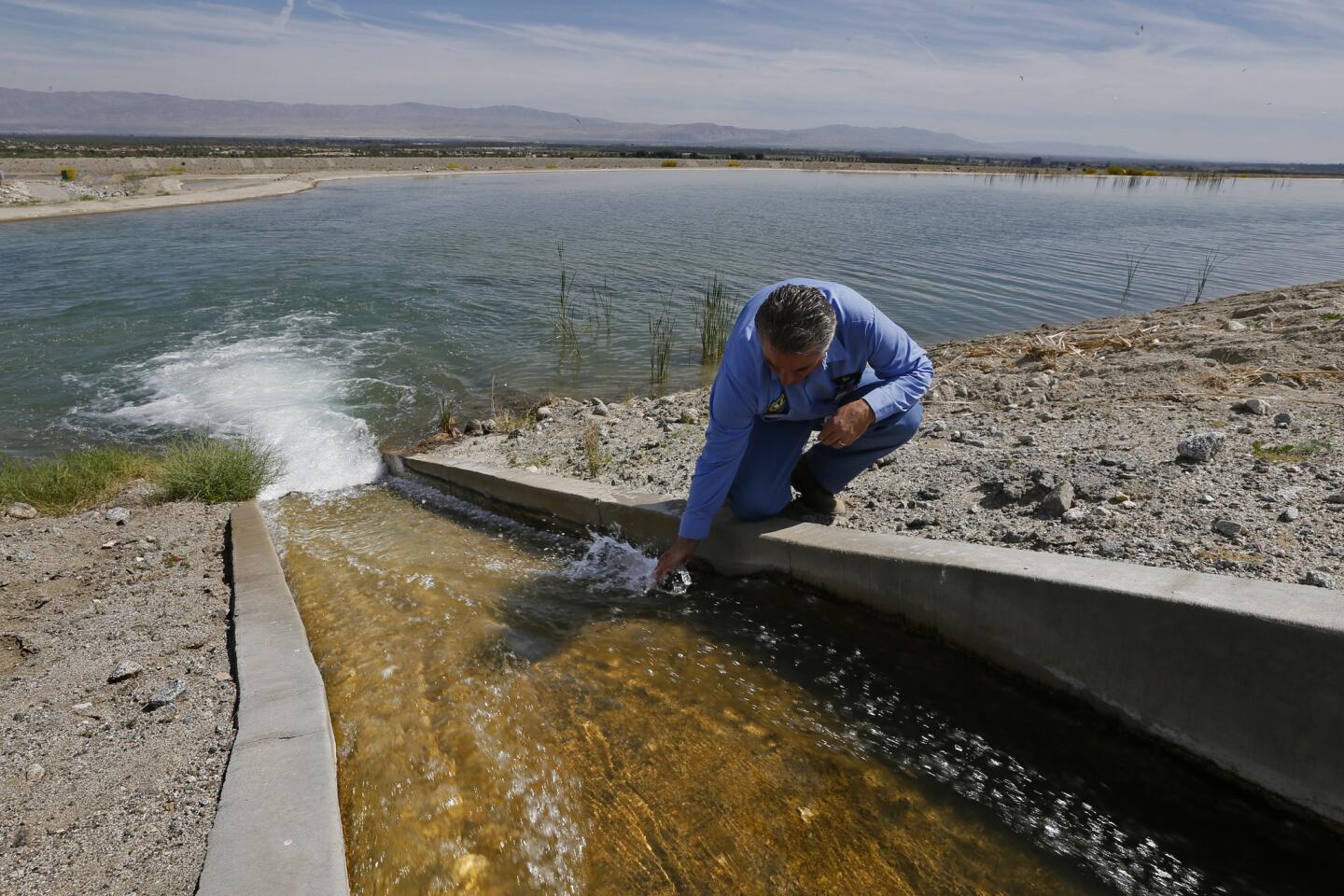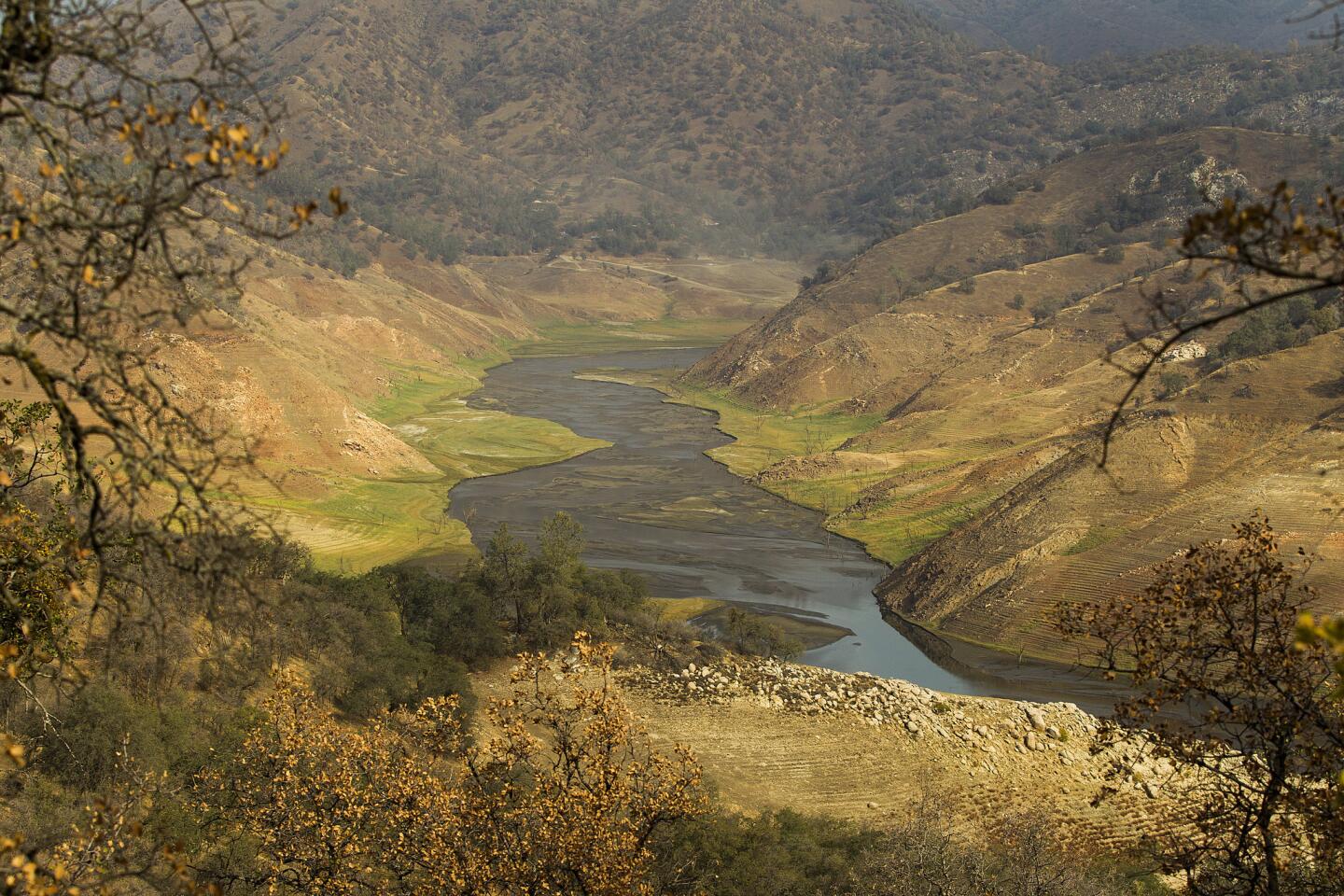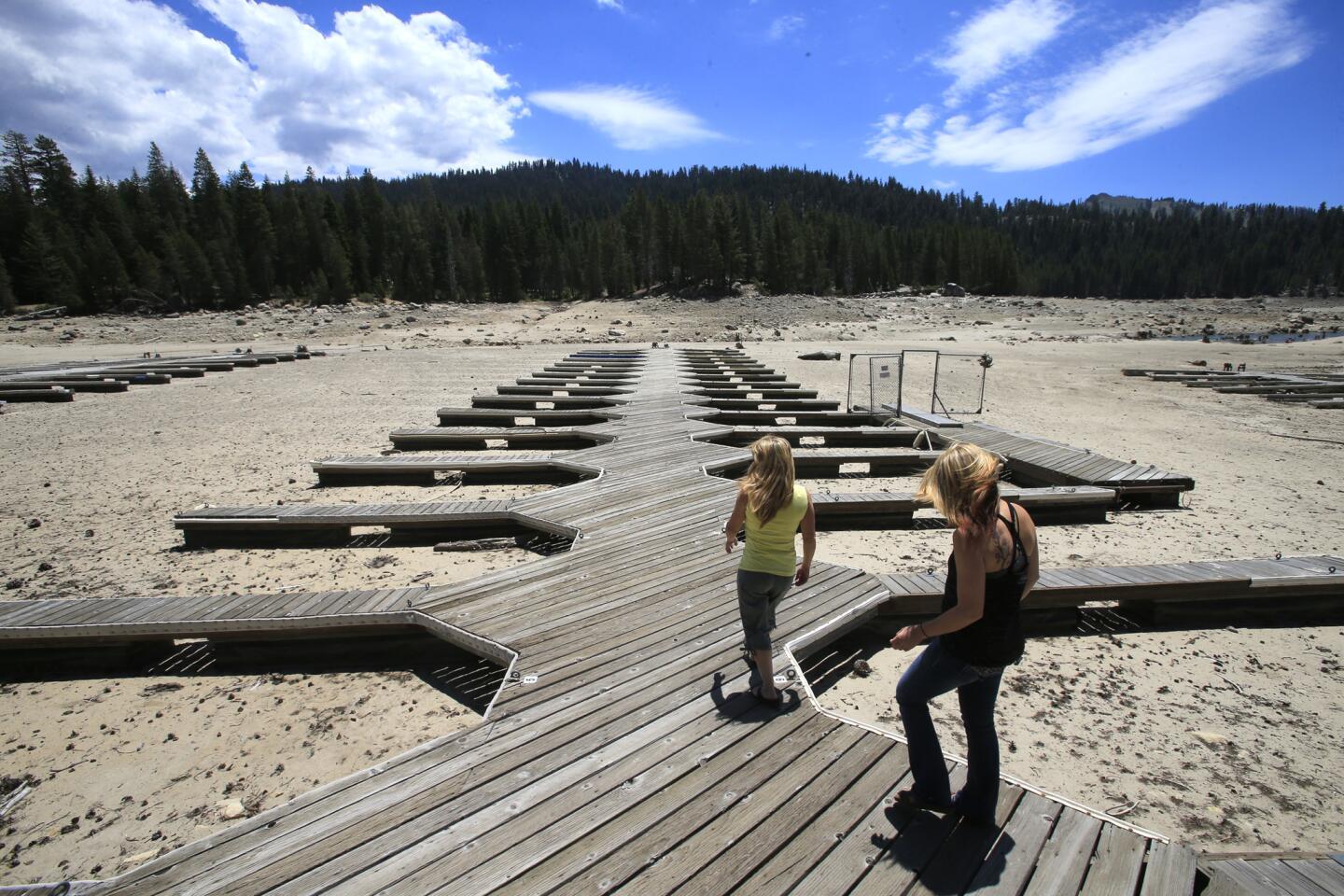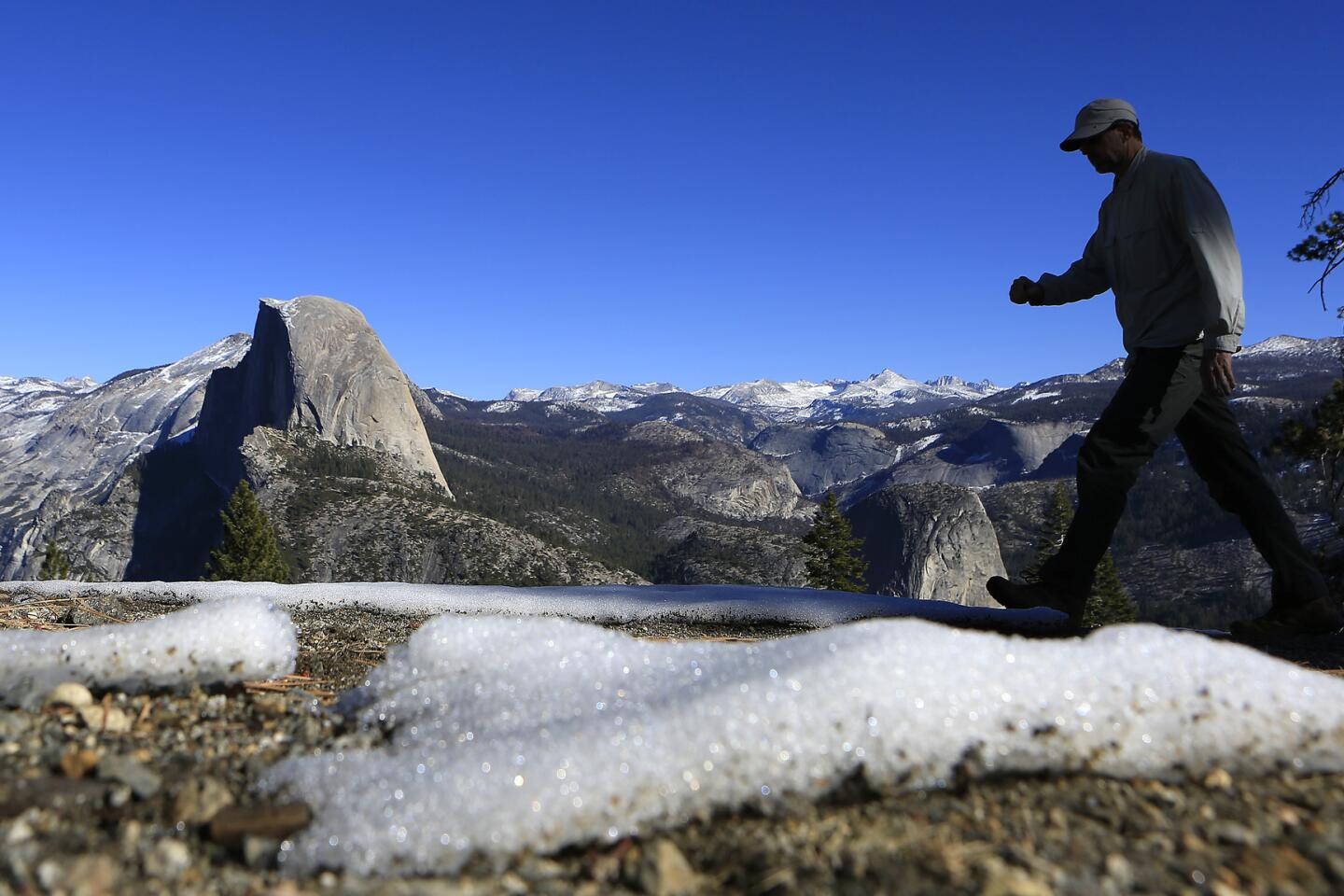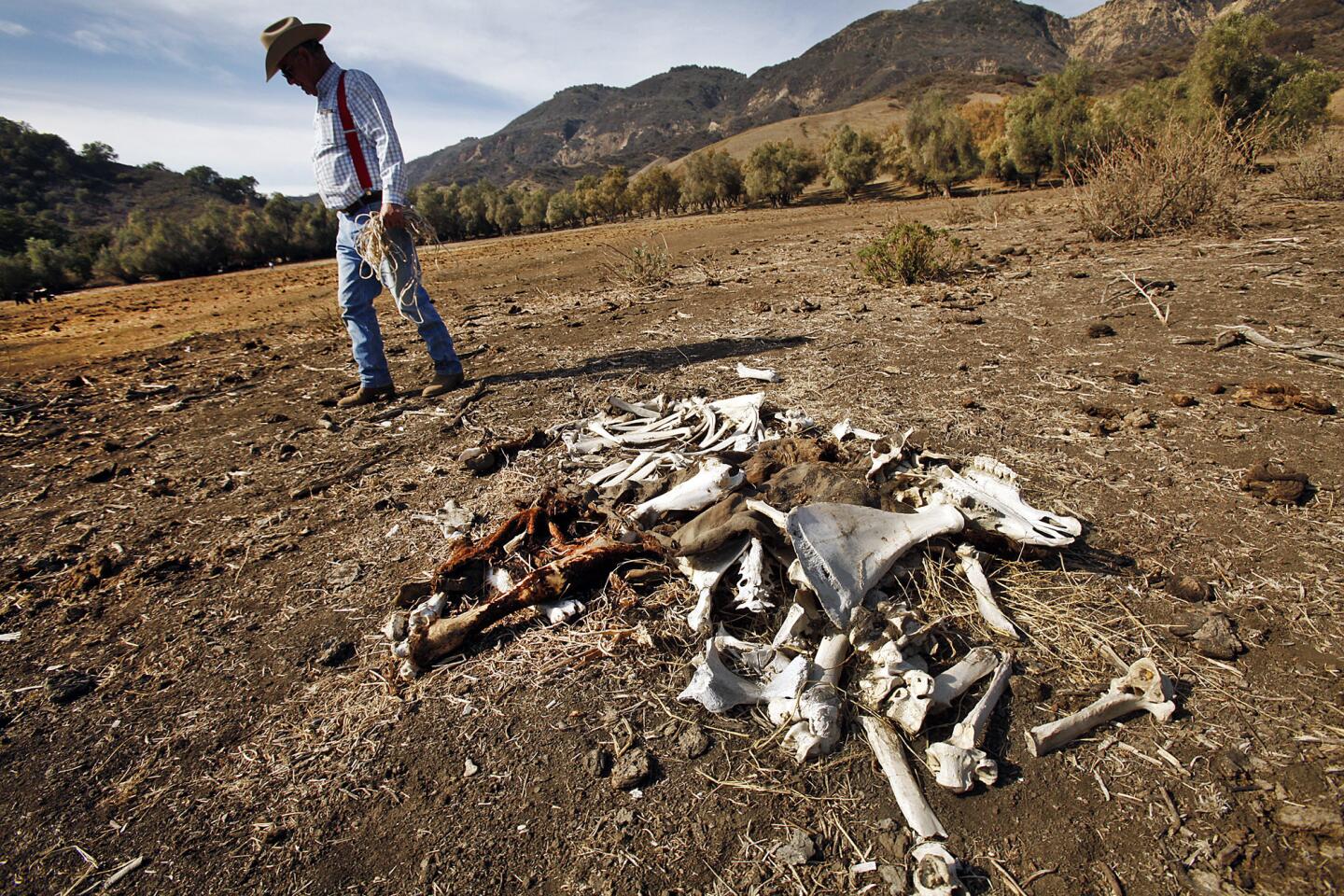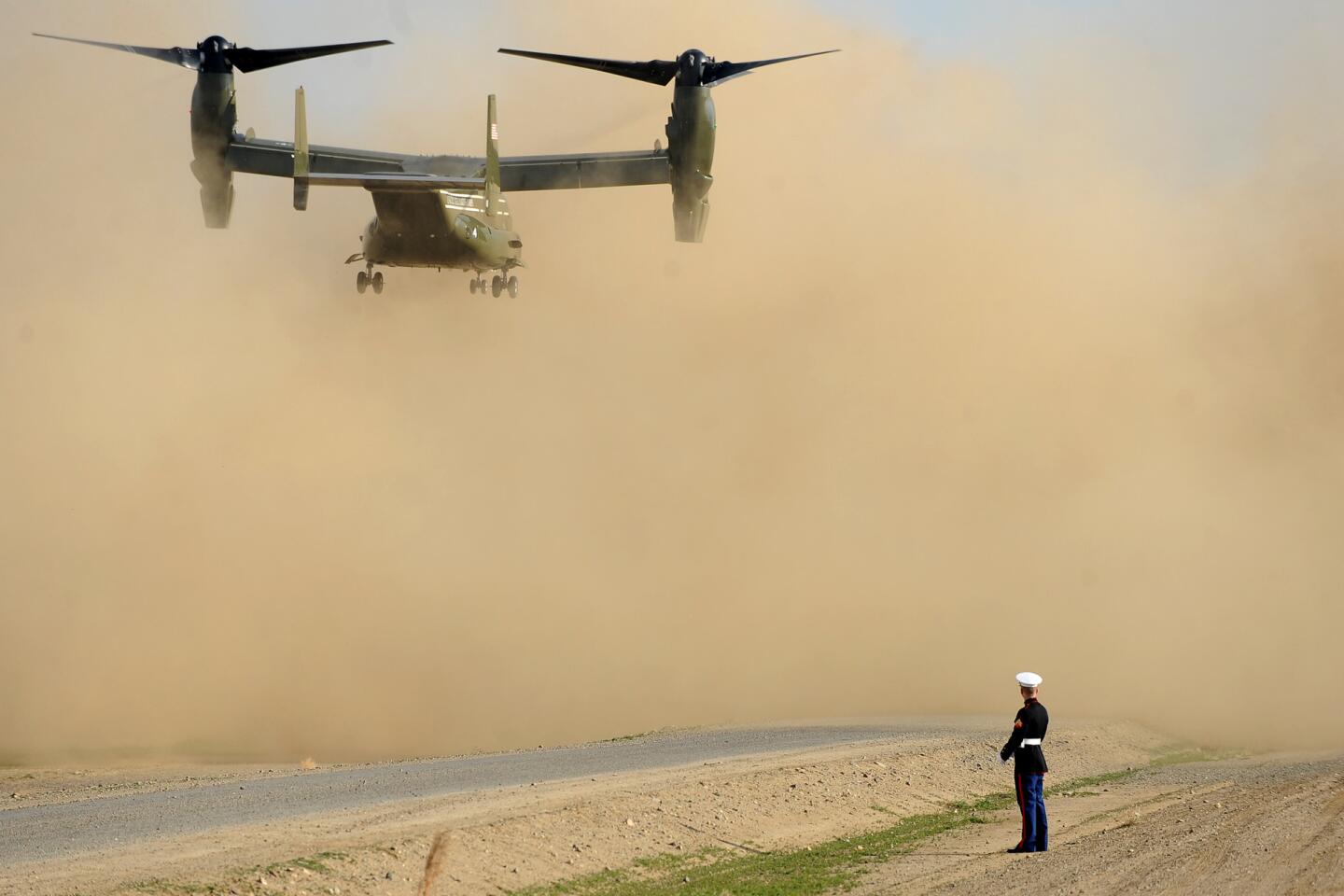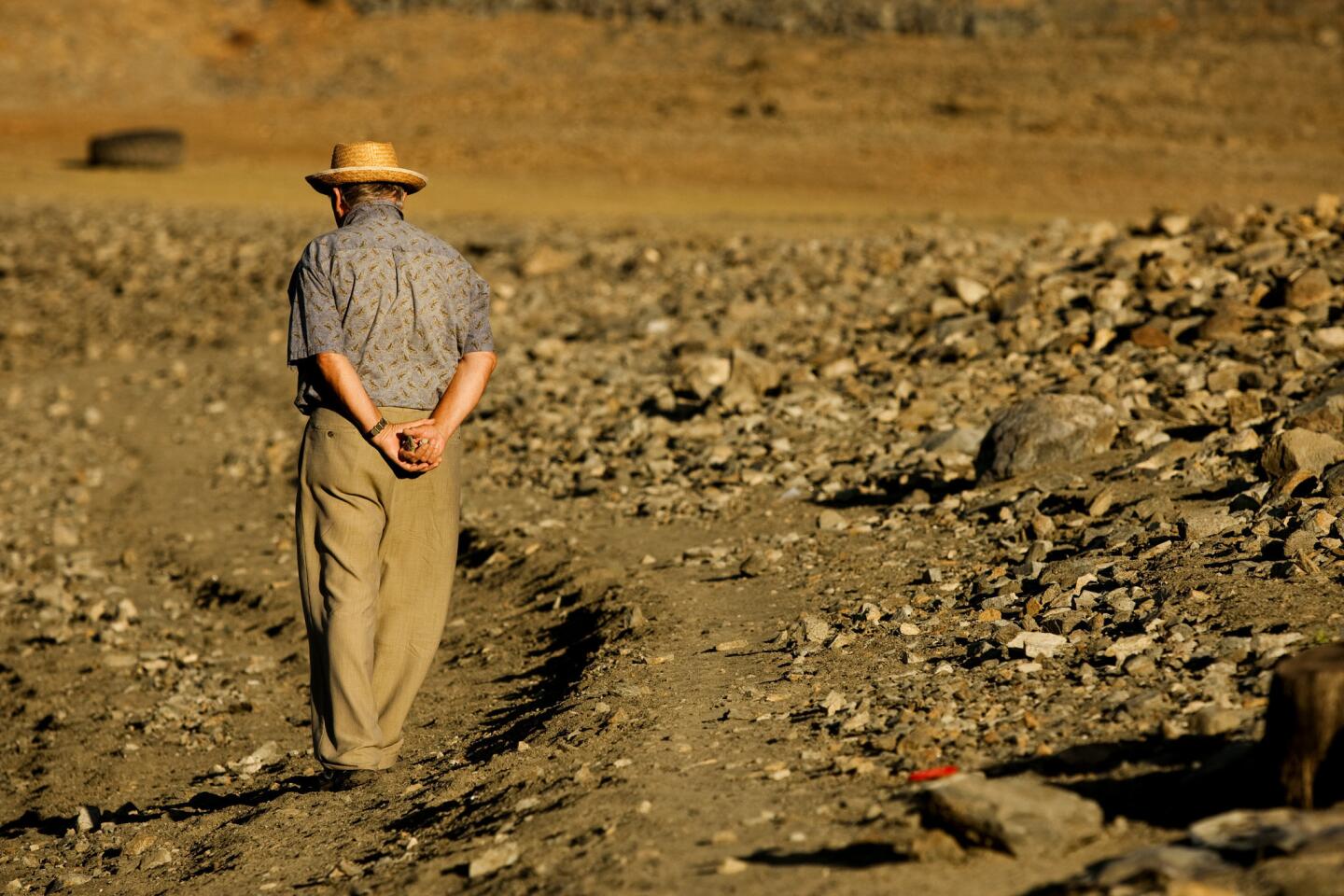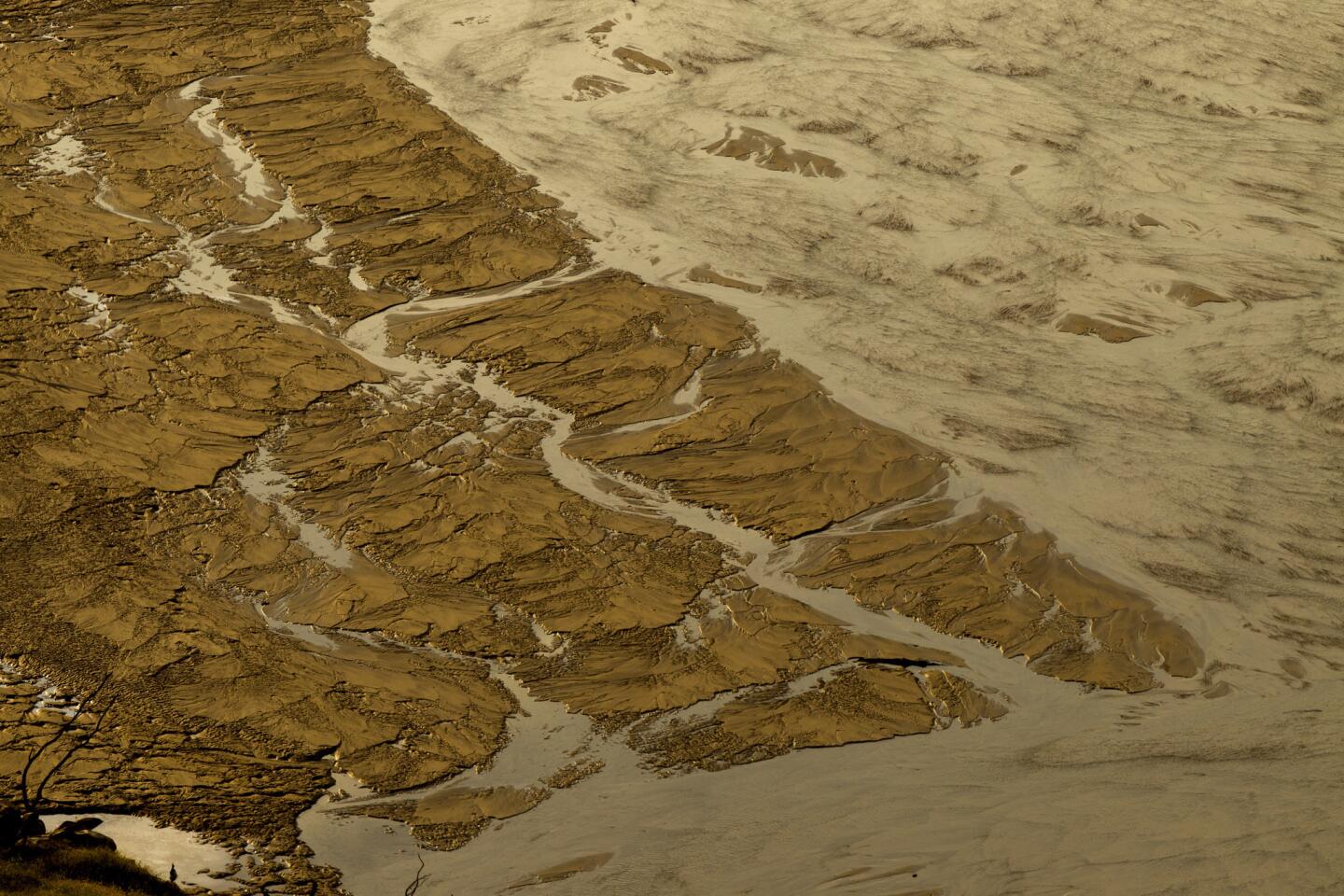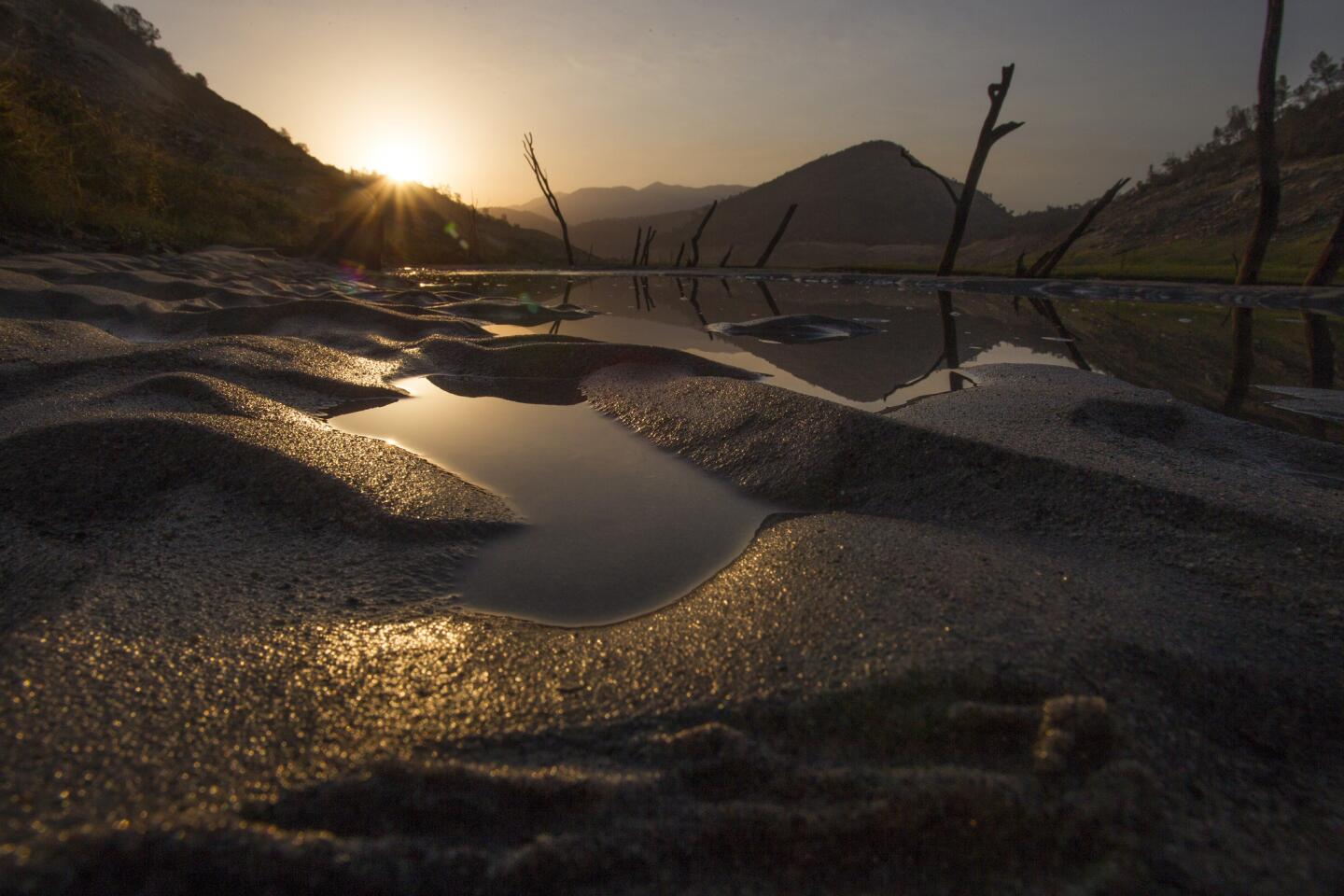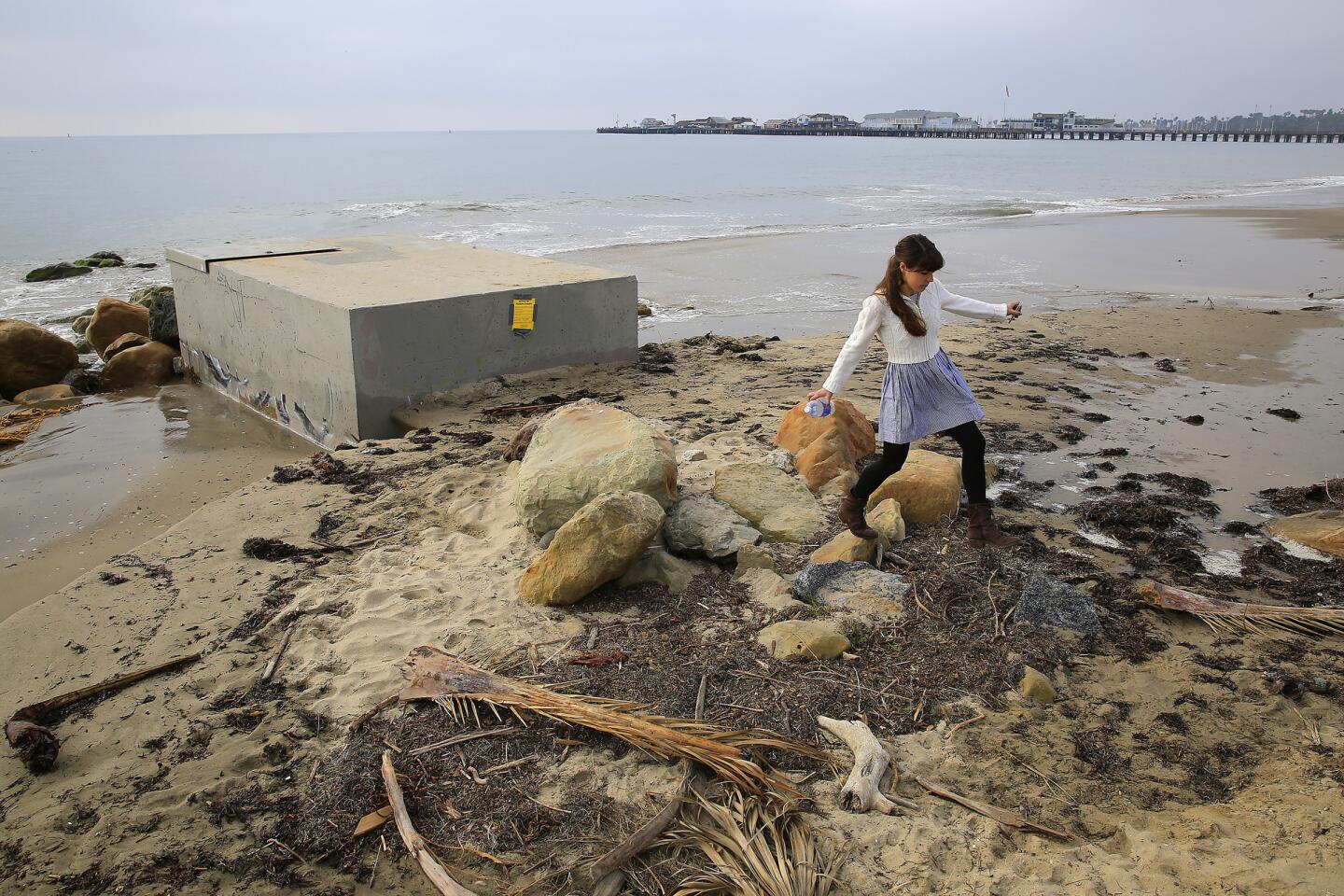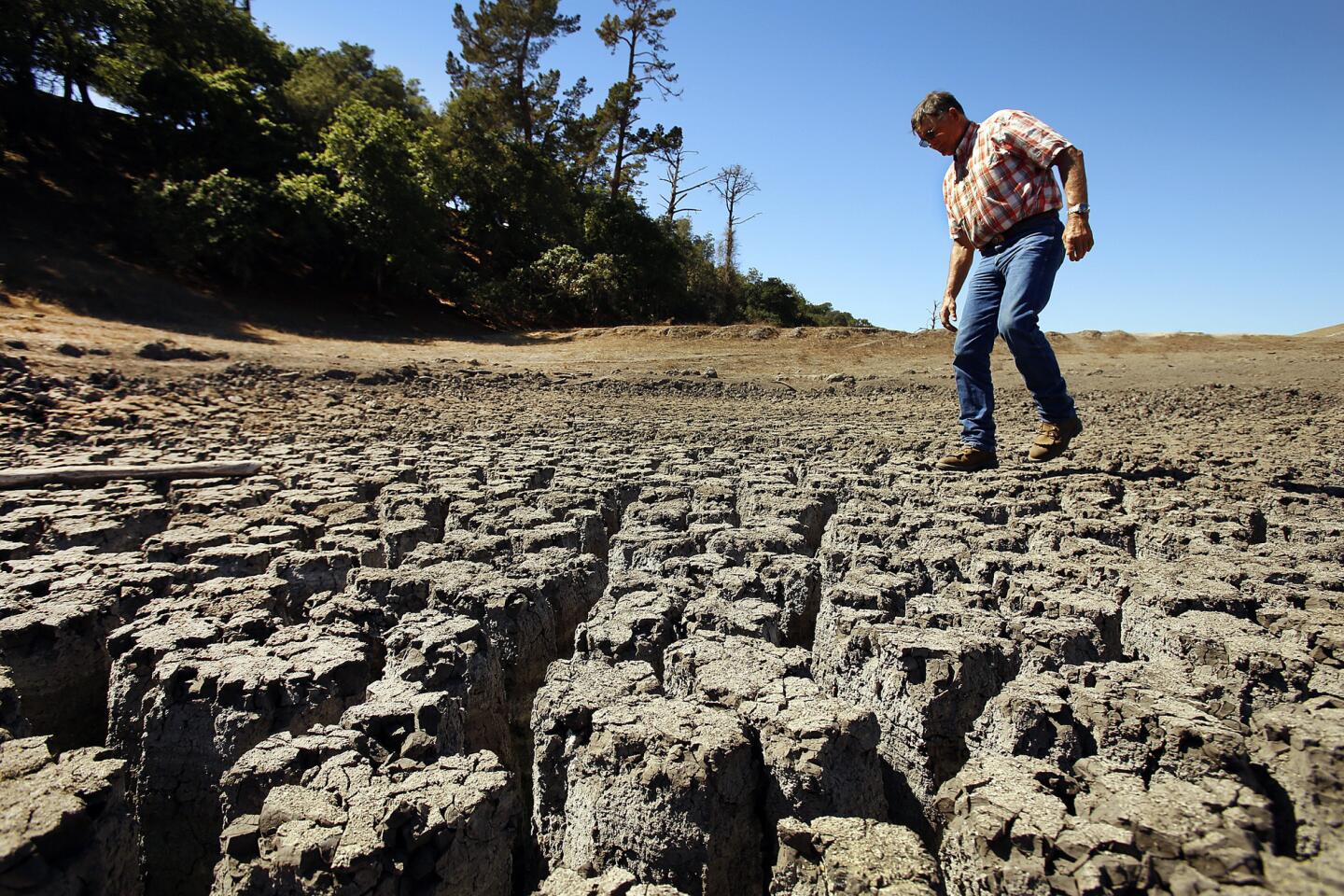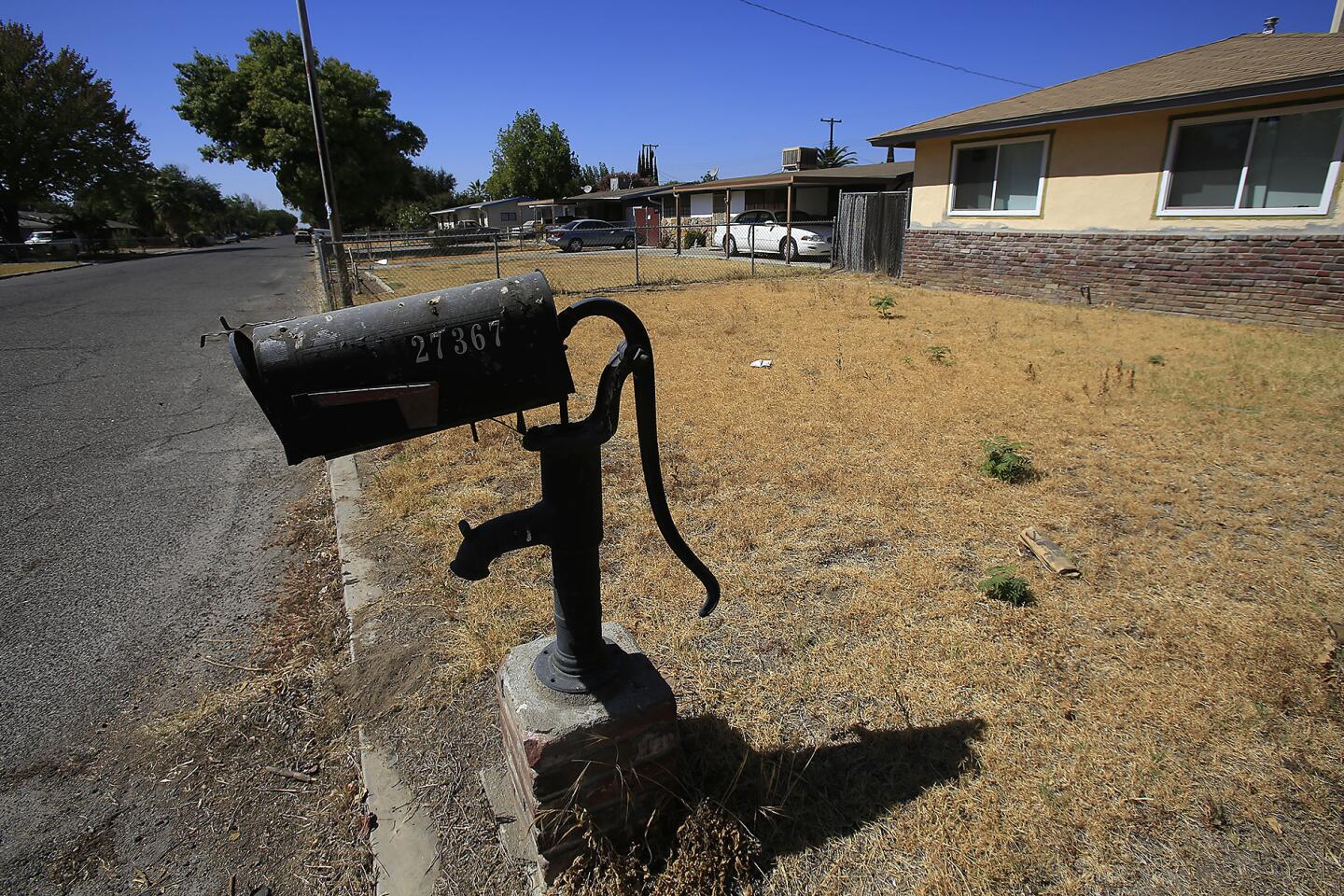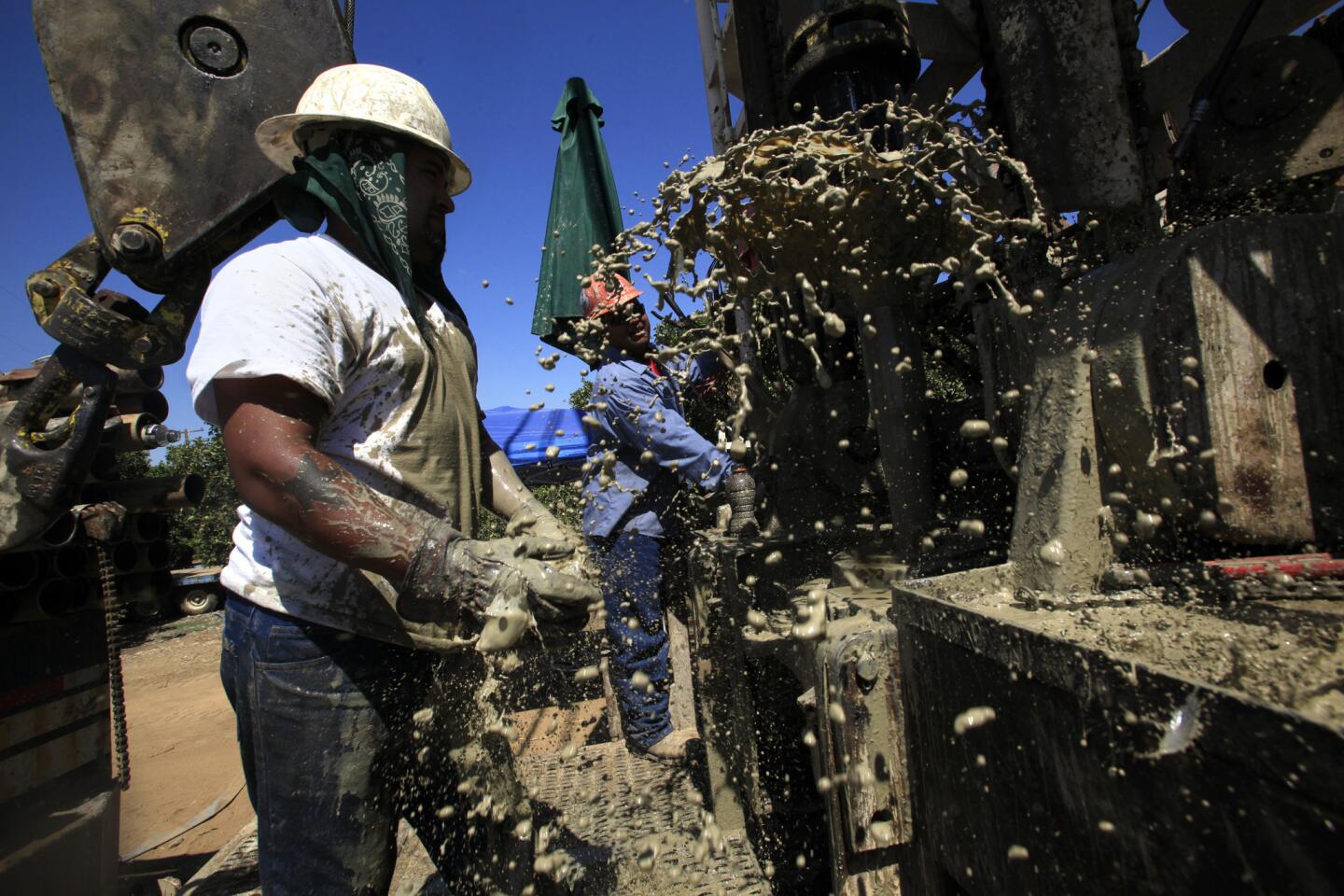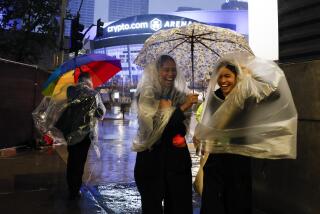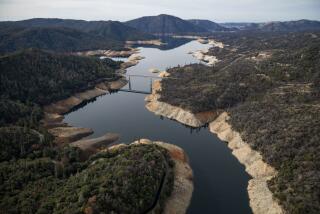How bad is the drought? Here are some sobering answers.
Conservation numbers for California come out Thursday. Residents have been seriously saving water in the last few months, spurred by severe drought conditions. The savings have proven a big bright side to a tough year.
So how bad is the drought? Here are some sobering answers.
IT WAS DRY...
The lack of rain and snow hit California water supplies hard. The Sierra snowpackâs water content measured just 5% of normal, obliterating the previous record low of 25%.
The snowpackâs sorry condition was what differentiated 2015 from previous years, said Felicia Marcus, chairwoman of the State Water Resources Control Board. (Snowpack is important because when it melts, it refills the stateâs reservoirs during the hot summer months.)
Water supplies were cut, wells ran dry and reservoir levels plummeted. Hereâs how far below normal some are:
Lake Shasta (59%)
Lake Oroville (48%)
Trinity Lake (33%)
Folsom Lake (32%)
New Melones (20%)
AND WAS HOT...
The 2015 water year also saw the highest average temperature in 120 years of record-keeping. According to the California Climate Tracker, the stateâs average temperature was 58.4 degrees â more than three degrees warmer than average and almost a full degree warmer than the previous high in 1995-96.
...AND HEAT WORSENS THE DROUGHT CONDITIONS
The biggest impact of warmer temperatures has been that they intensify the effects of drought, increasing evaporation and drying out the soil.
NEWSLETTER: Get your free weekly guide to the drought>>
âThe character of this drought has been to have record and near-record temperatures,â state climatologist Michael L. Anderson said. âThis drought is definitely warmer than its 20th-century counterparts. And when you run into that, you have a higher demand for water and a limited supply, so it creates greater stress.â
The lack of runoff has also reduced stream flow, creating dangerous conditions for native fish.
...AND THOSE CONDITIONS ALSO FUELED FIRES
In recent months, two of the most destructive wildfires in state history have raged across Northern California. According to federal statistics, a total of 813,163 acres have burned across the state this calendar year.
The lack of precipitation has dried out vegetation, driving fuel moisture to critically low levels.
âFour years of such parched conditions have predisposed the vegetation to be explosive, and thatâs not exaggerating â itâs explosive,â said Ken Pimlott, director of the California Department of Forestry and Fire Protection. âThe [calendar] year hasnât ended yet, and itâs comparing right up there with some of the most devastating fire seasons on record.â
MORE ON DROUGHT:
Salton sea faces catastrophic future, toxic dust storms, officials say
California voters hopeful that El Niño will ease drought, poll finds
Water, 2015, California: The no-good, very bad year -- now, âpray for rainâ
More to Read
Sign up for Essential California
The most important California stories and recommendations in your inbox every morning.
You may occasionally receive promotional content from the Los Angeles Times.
